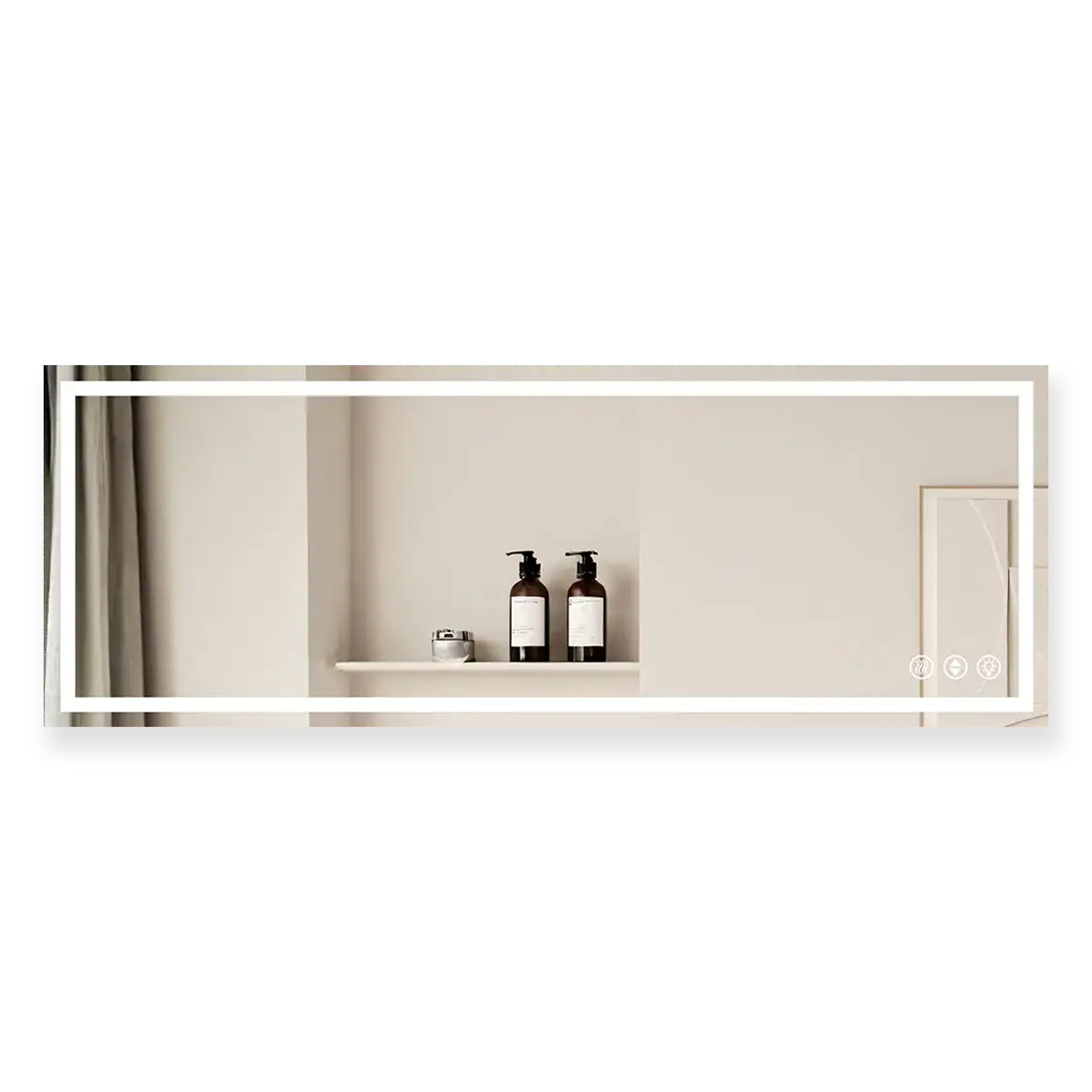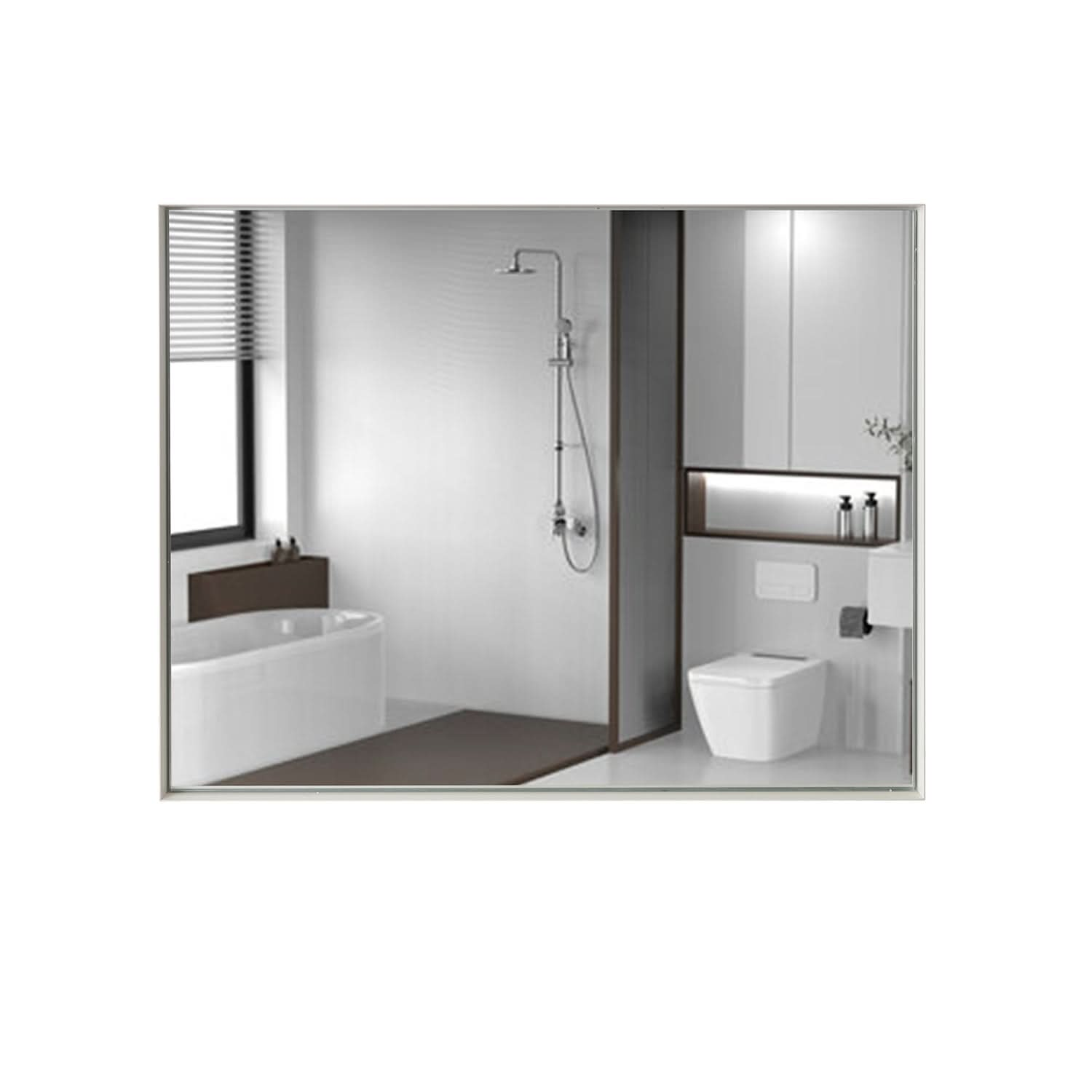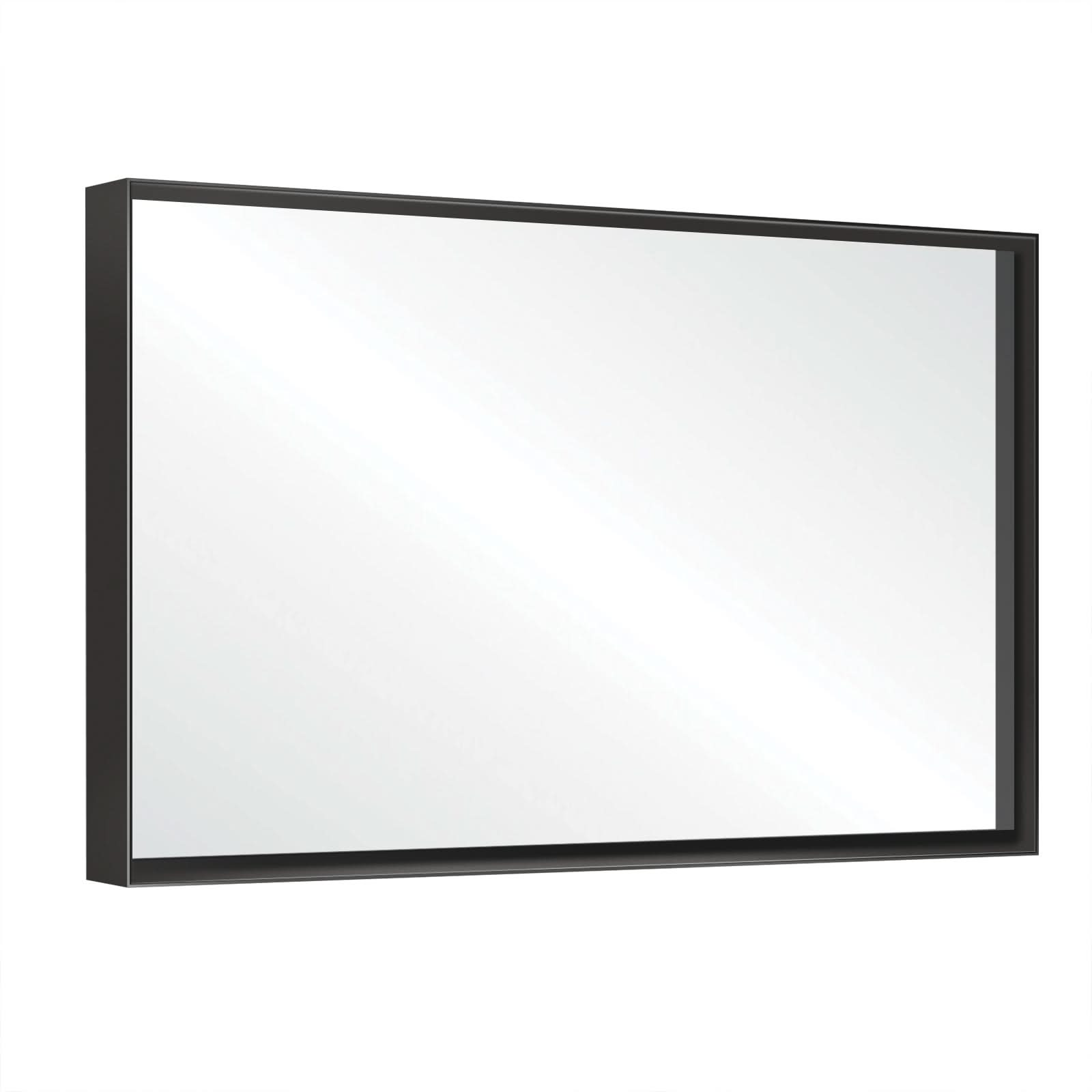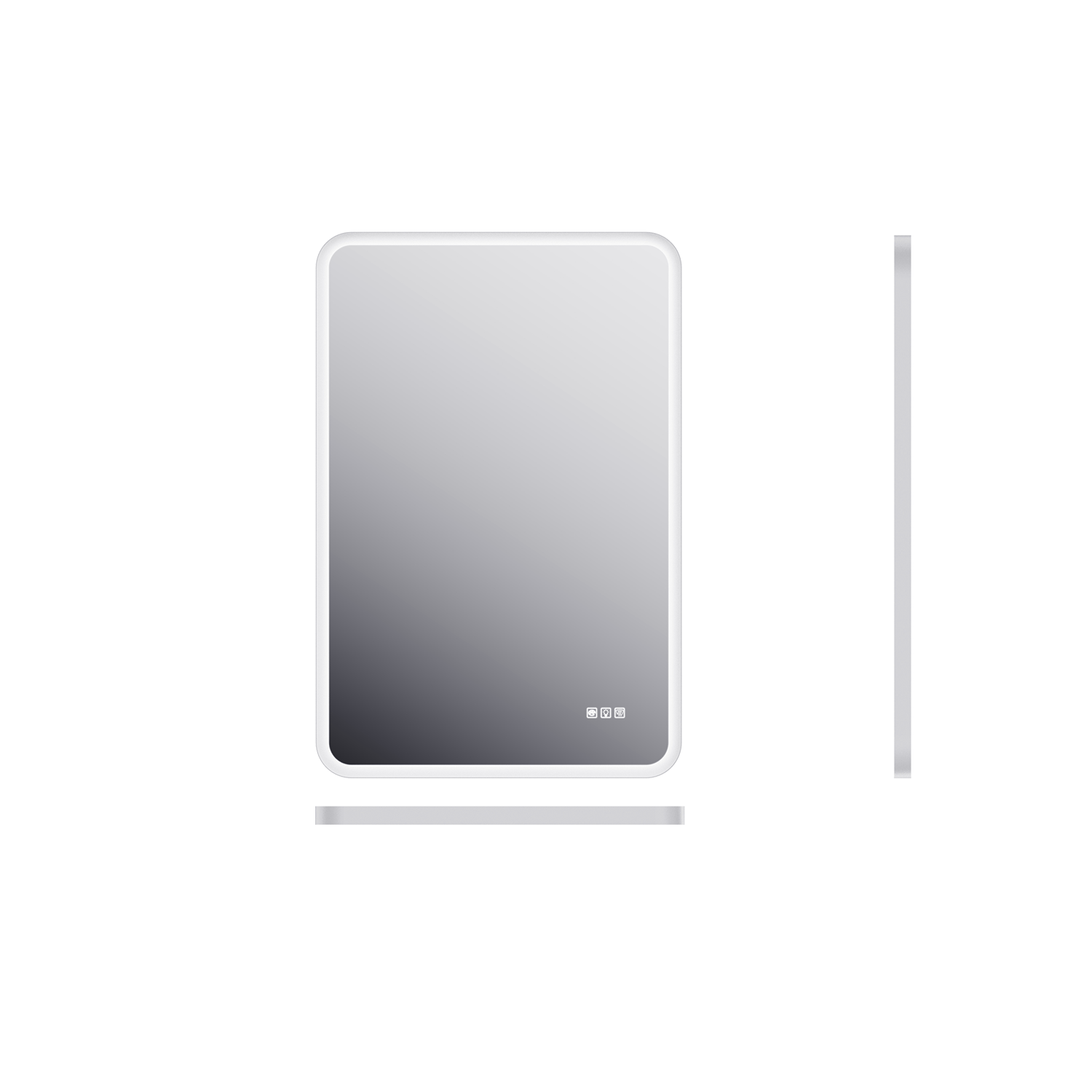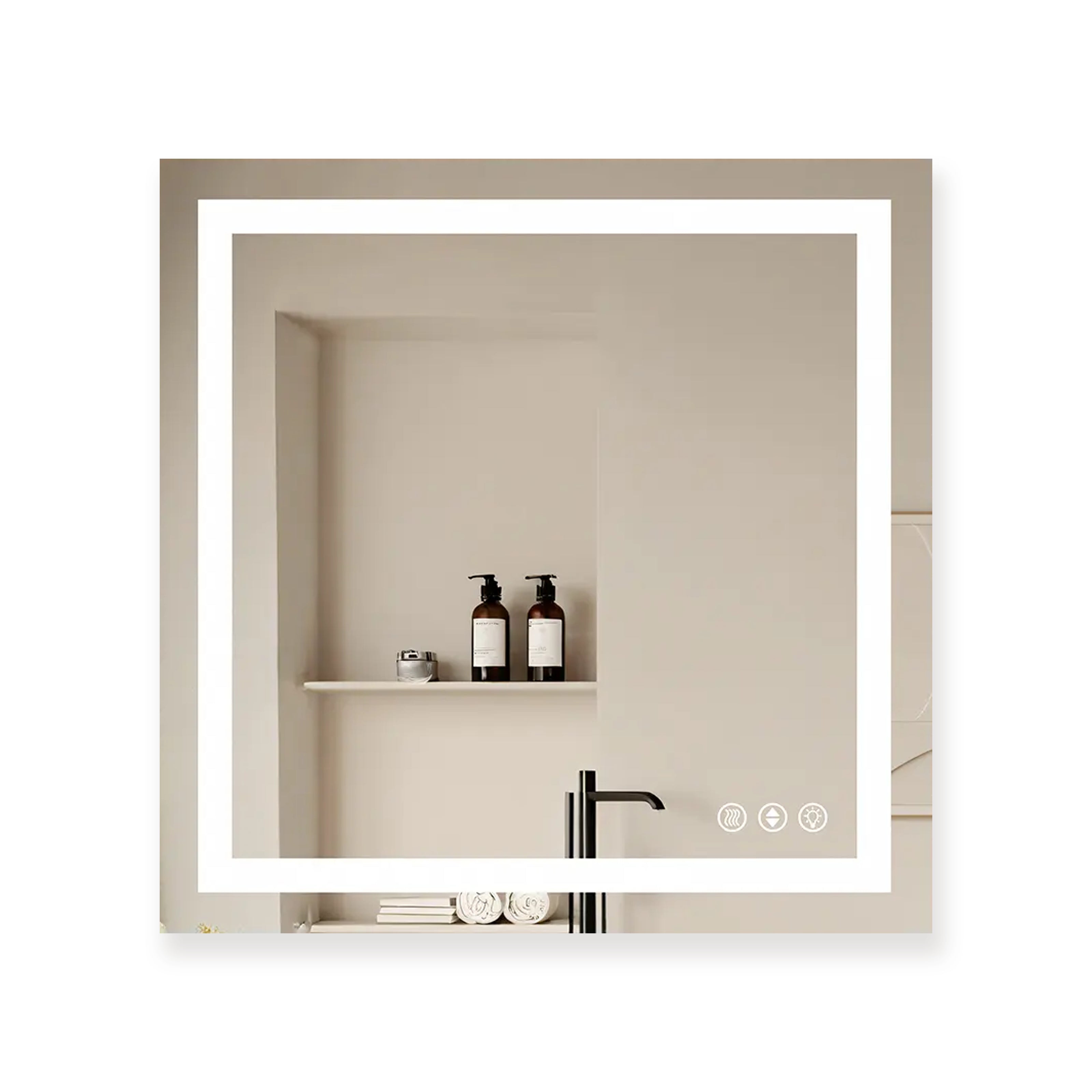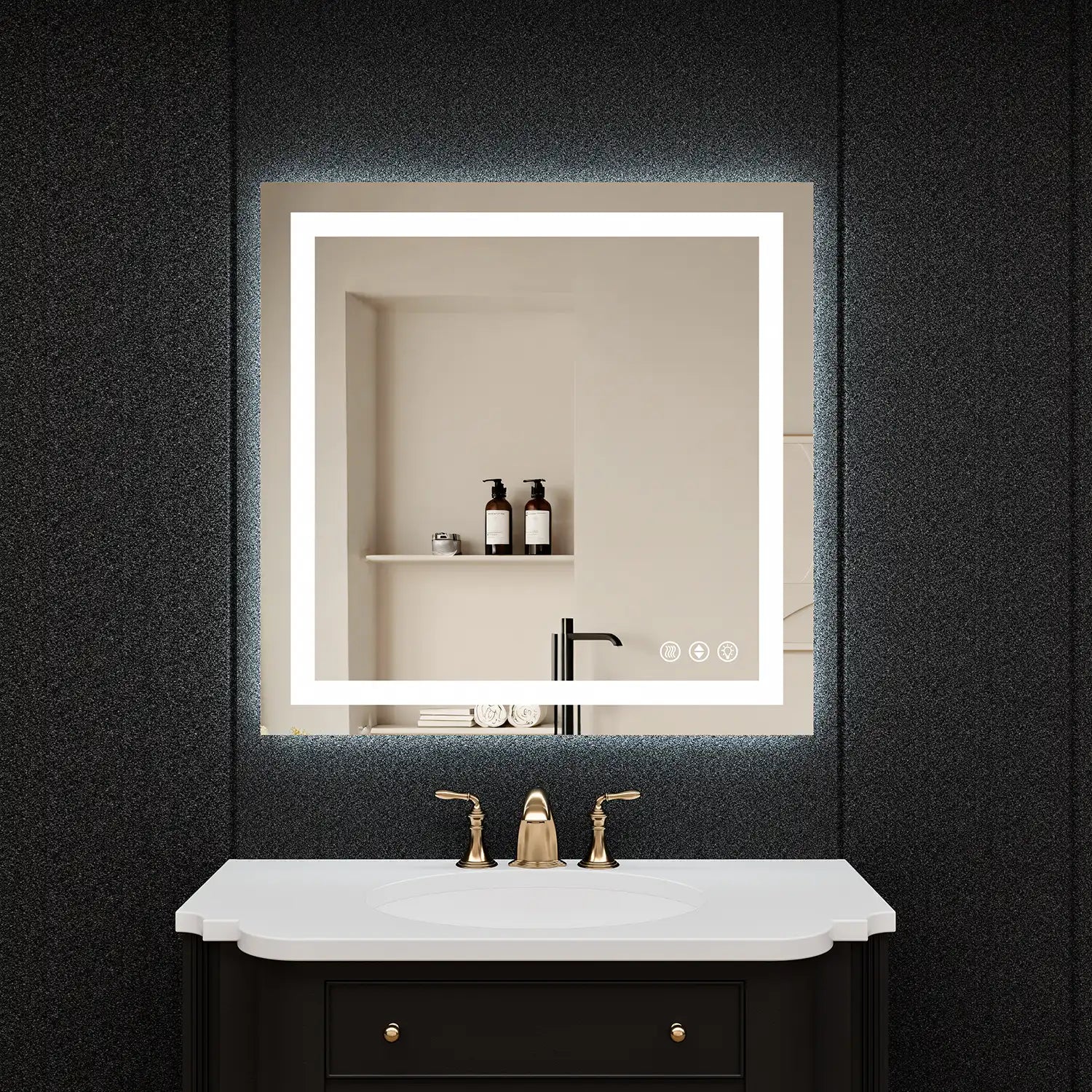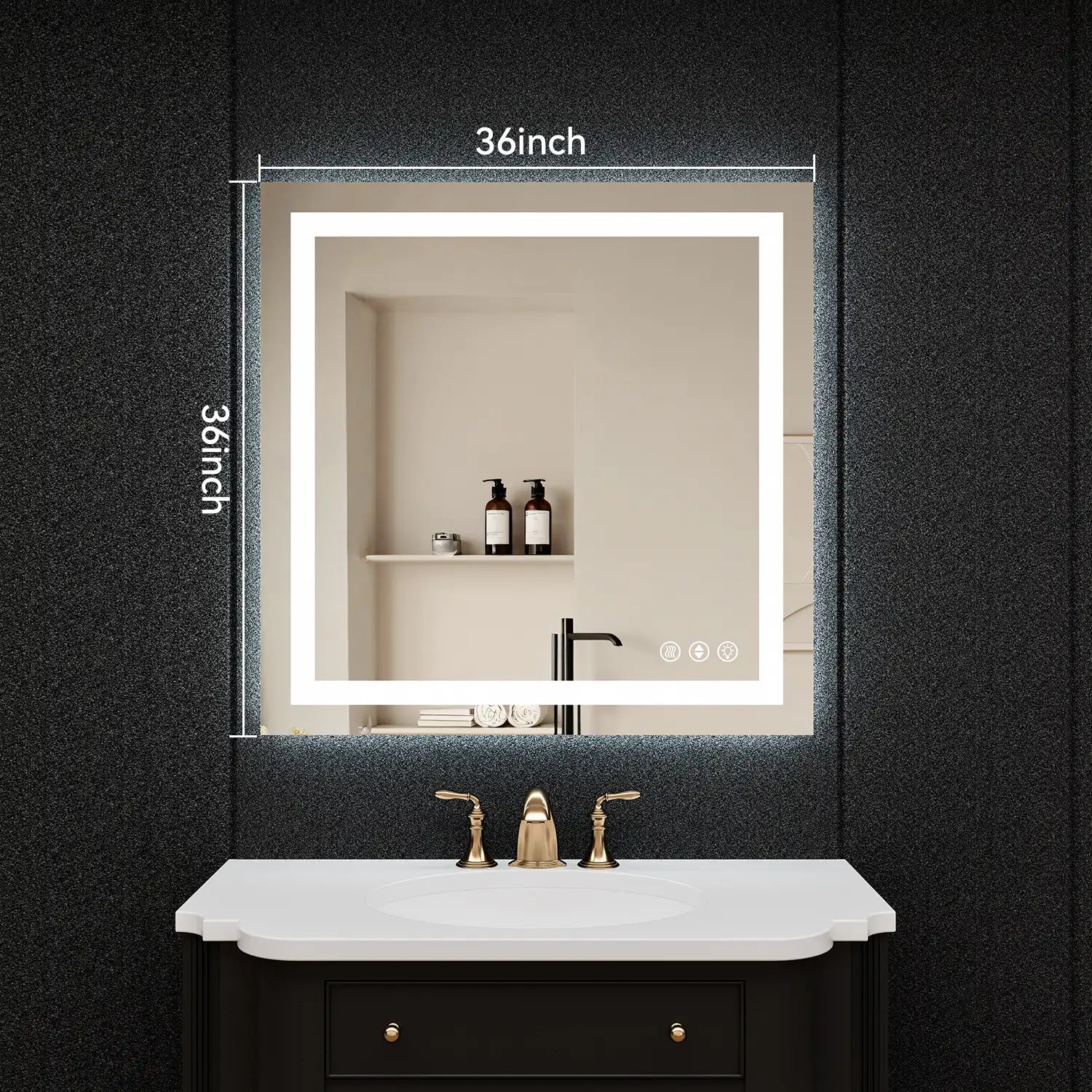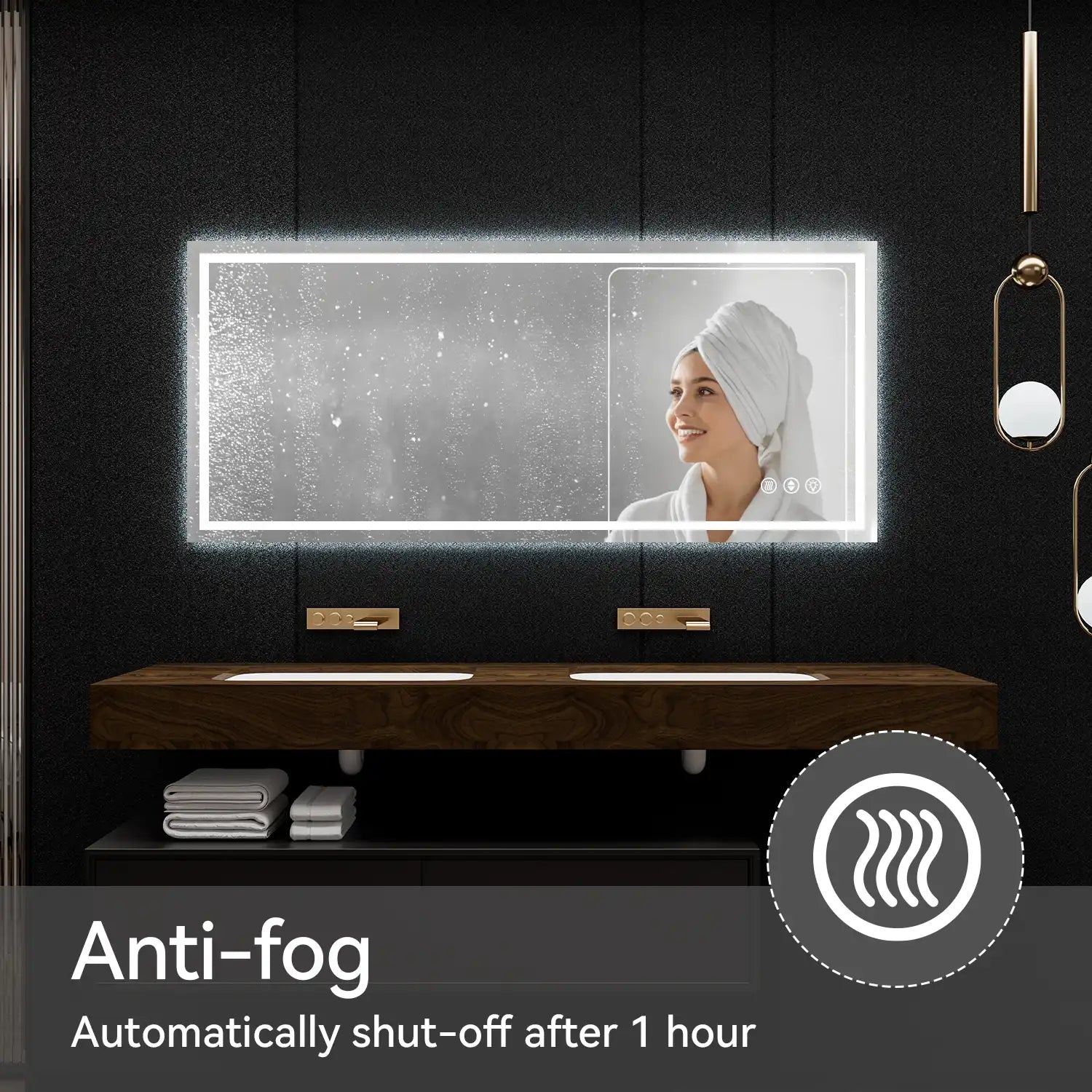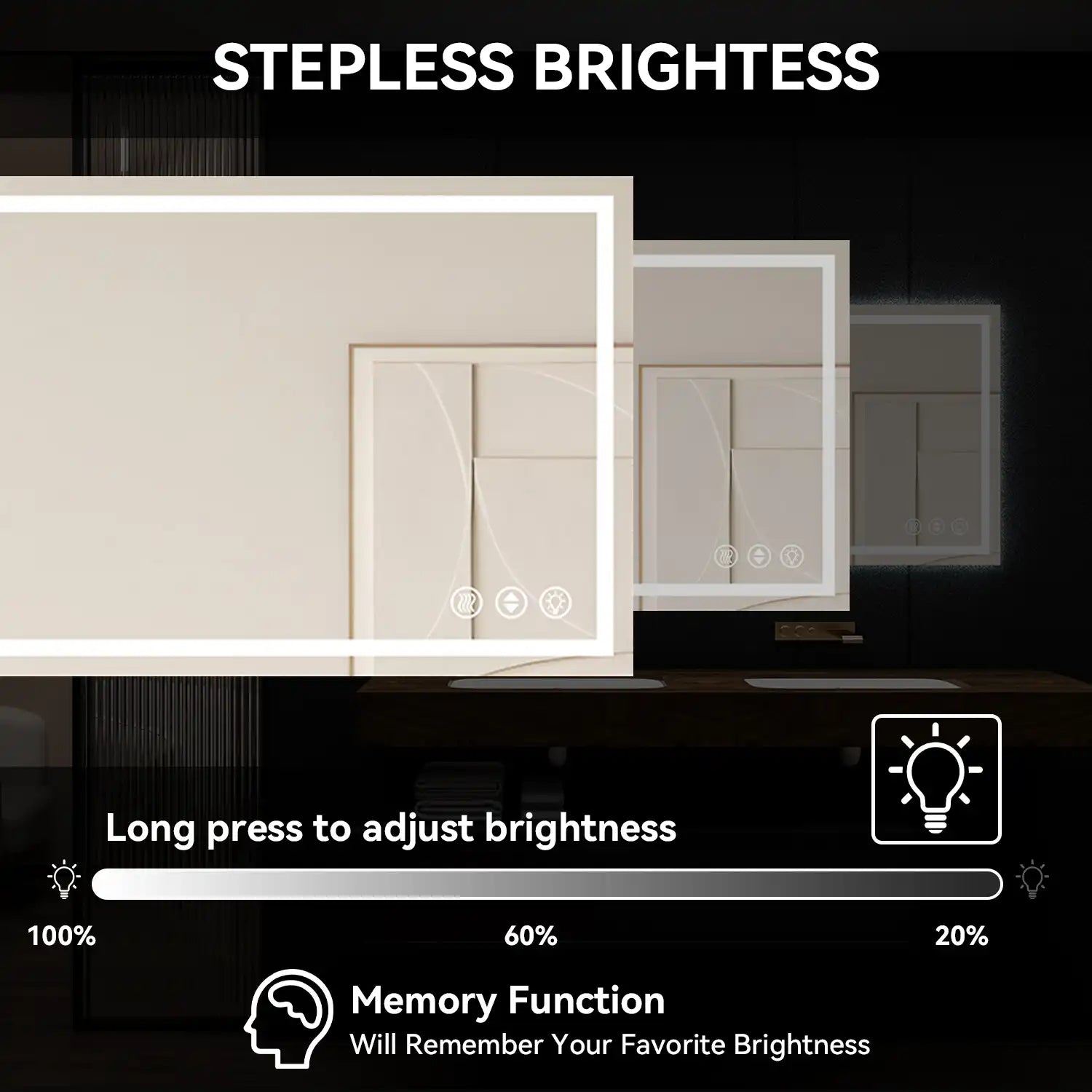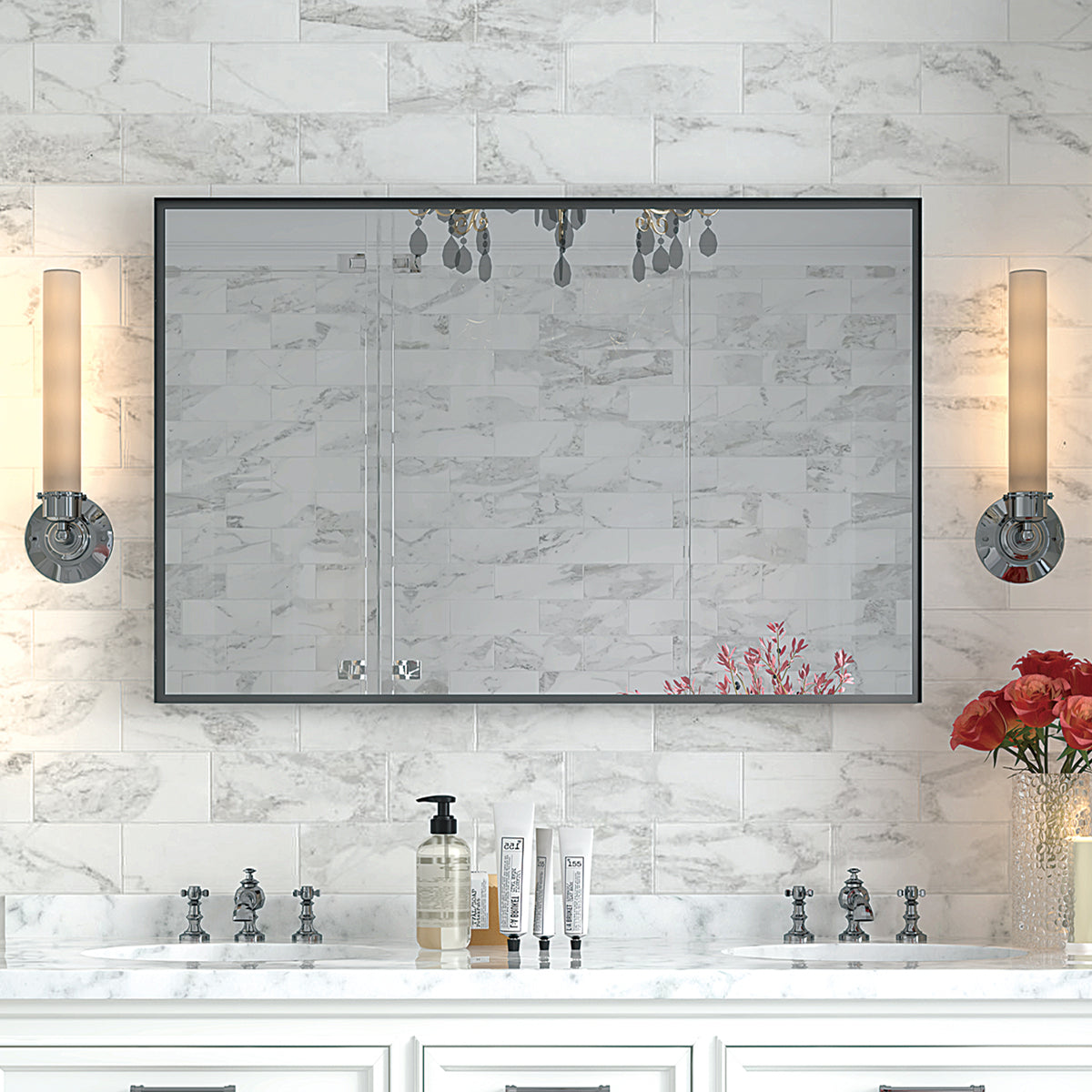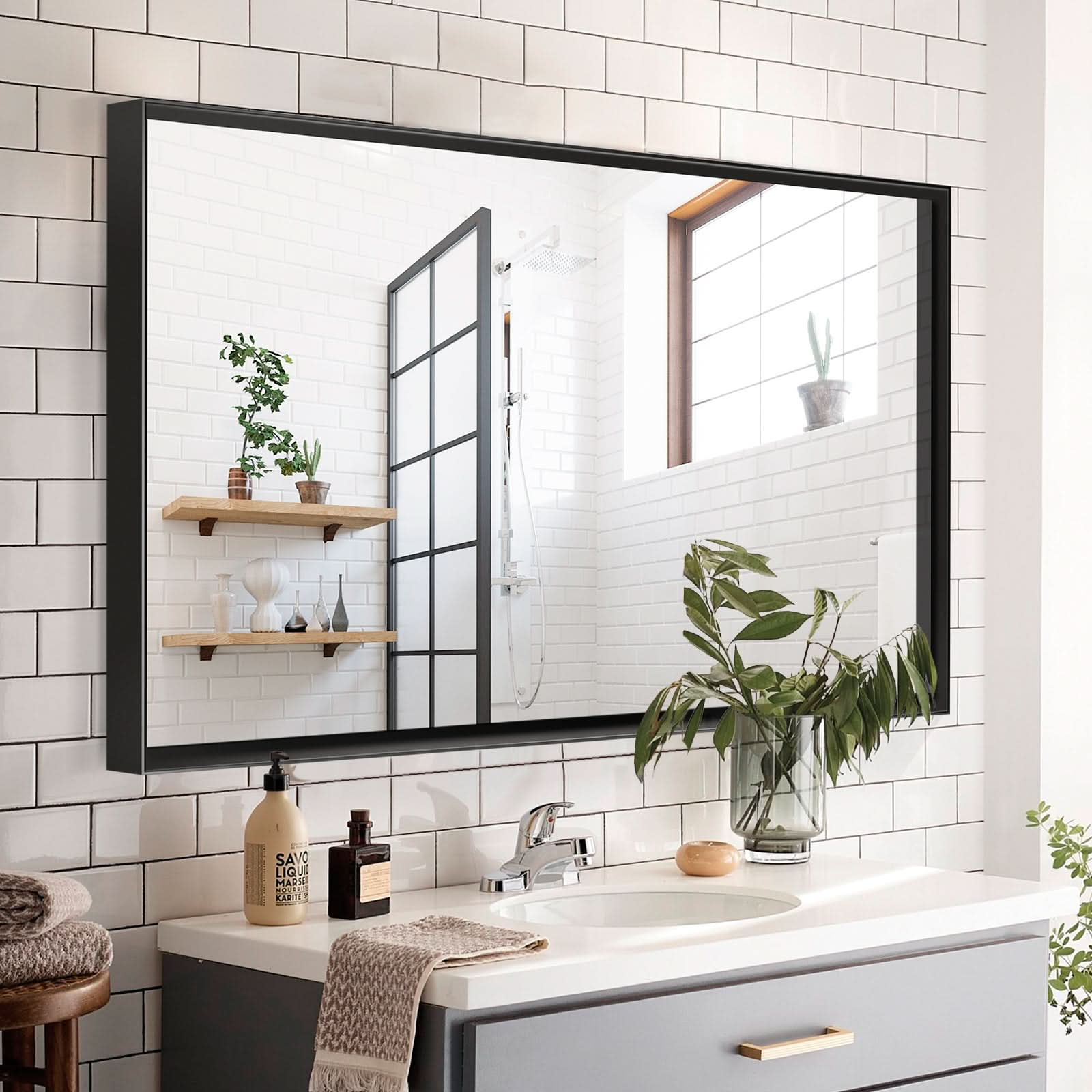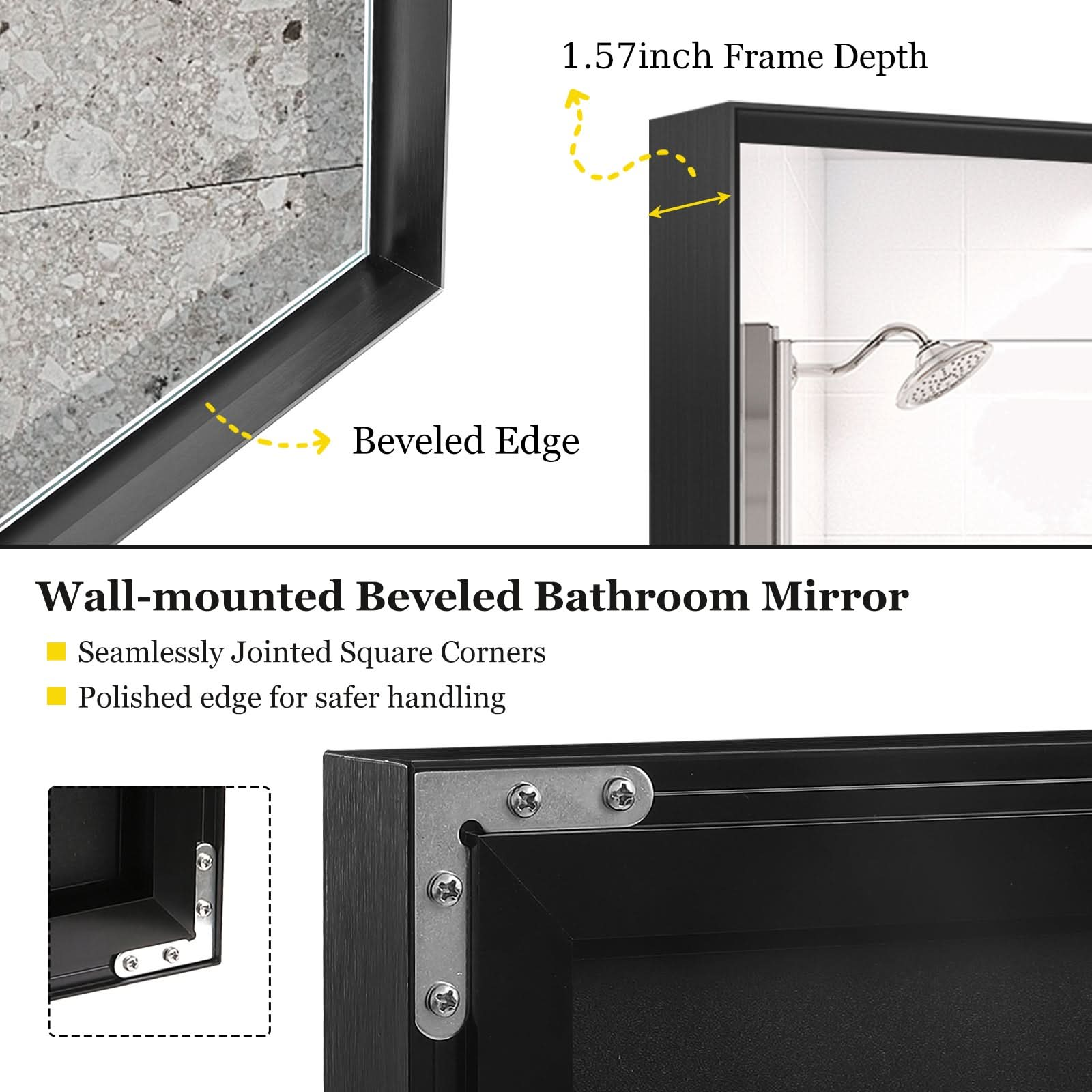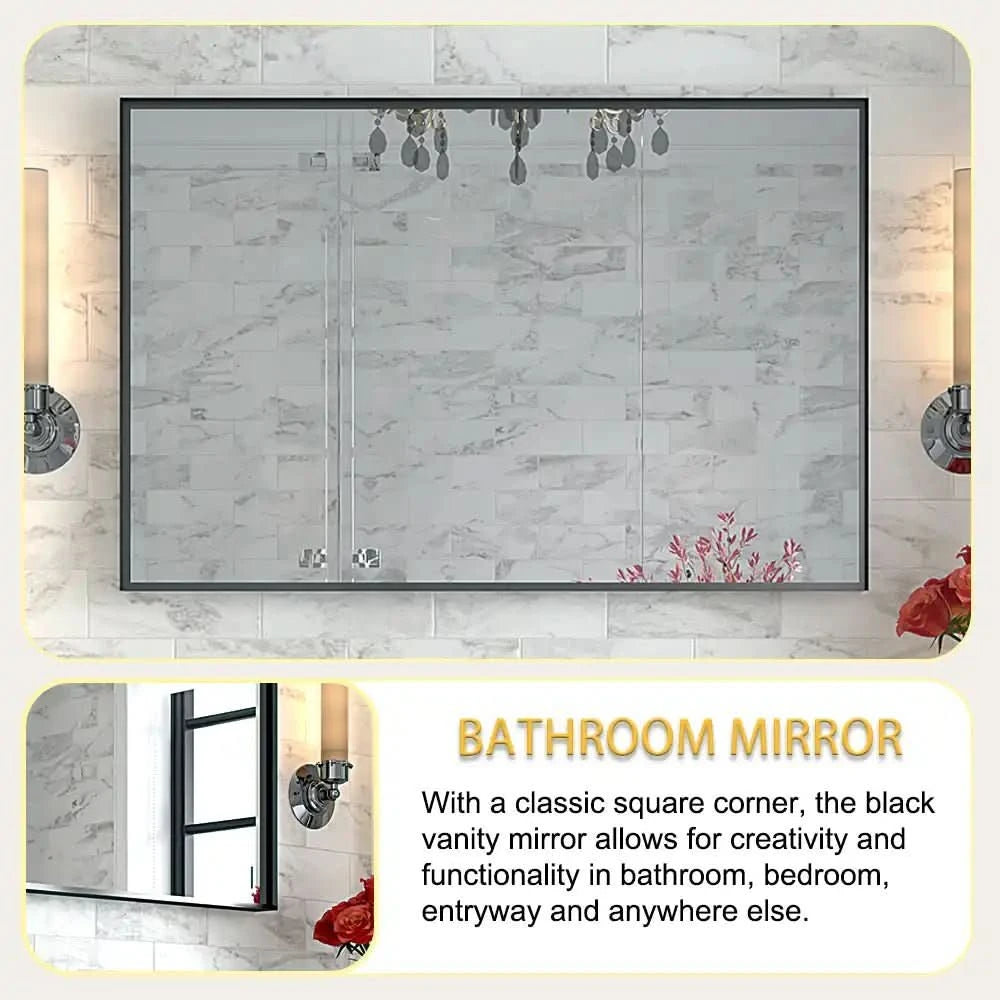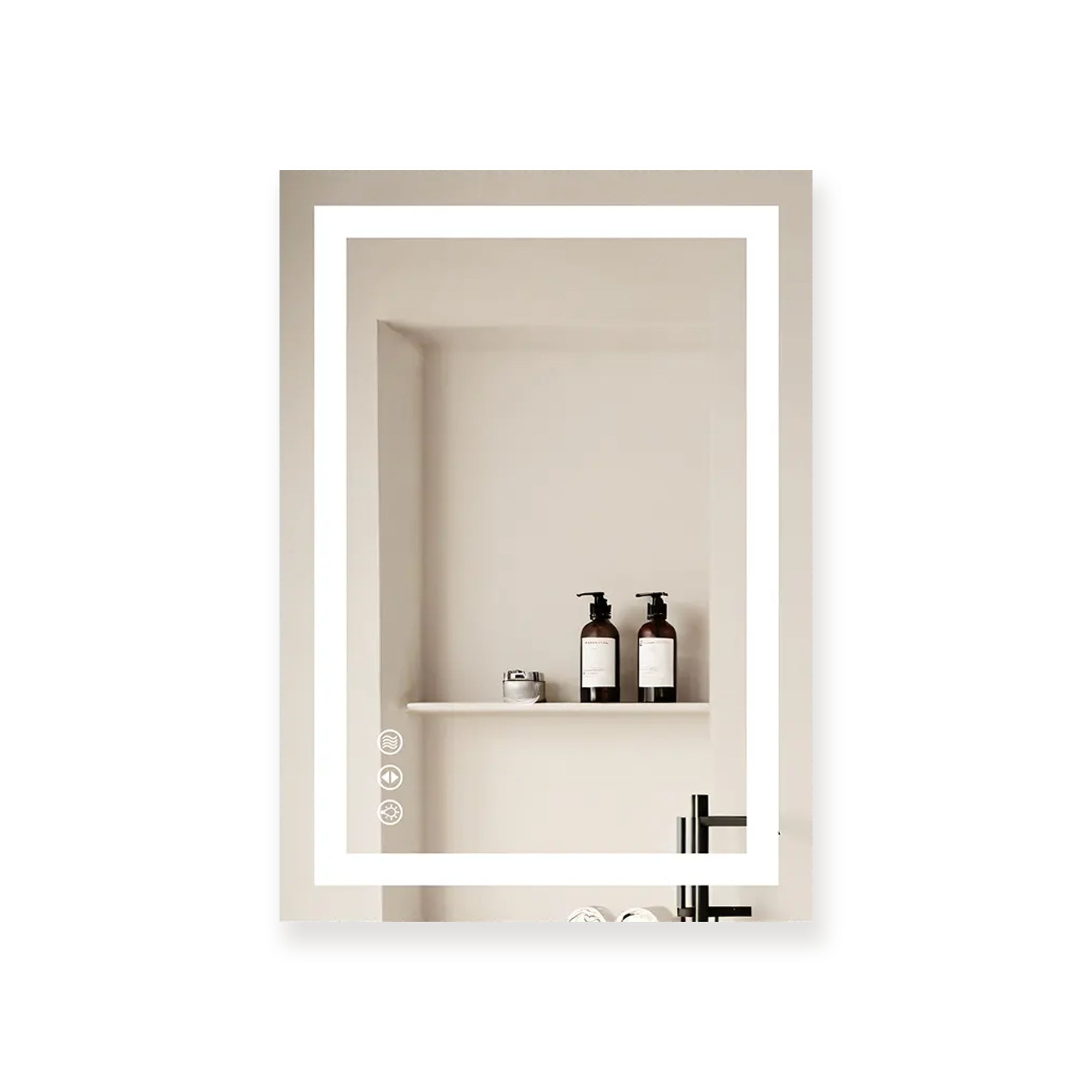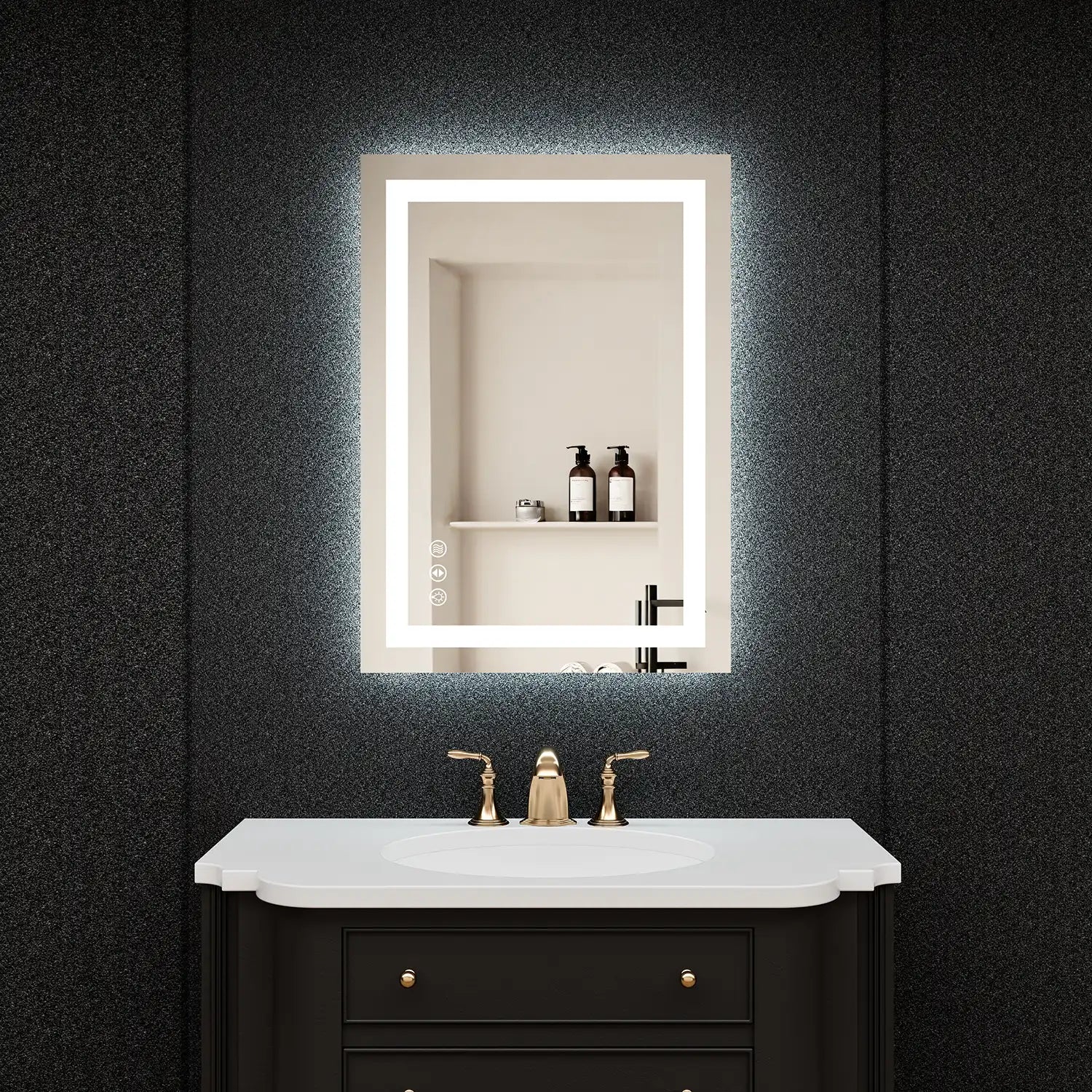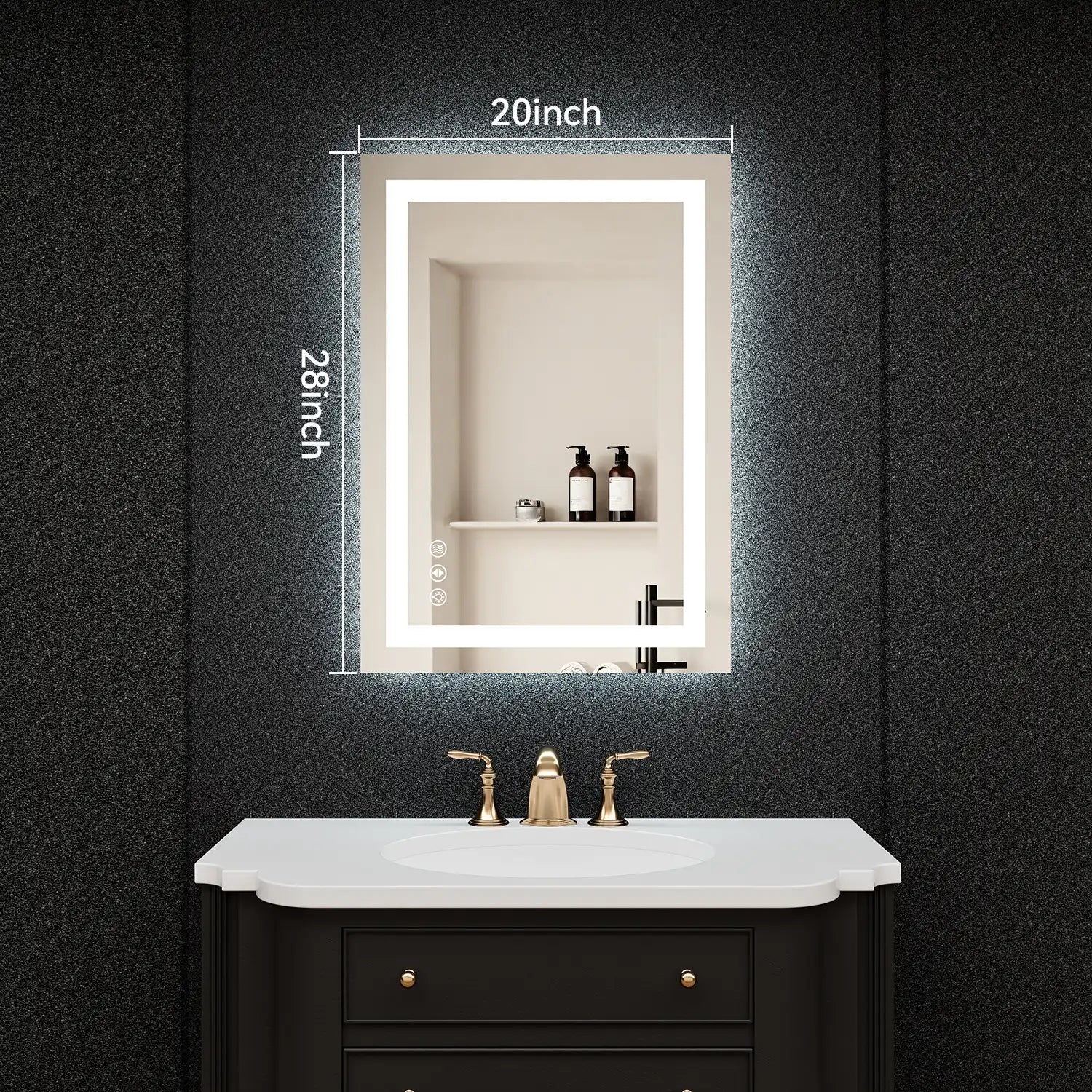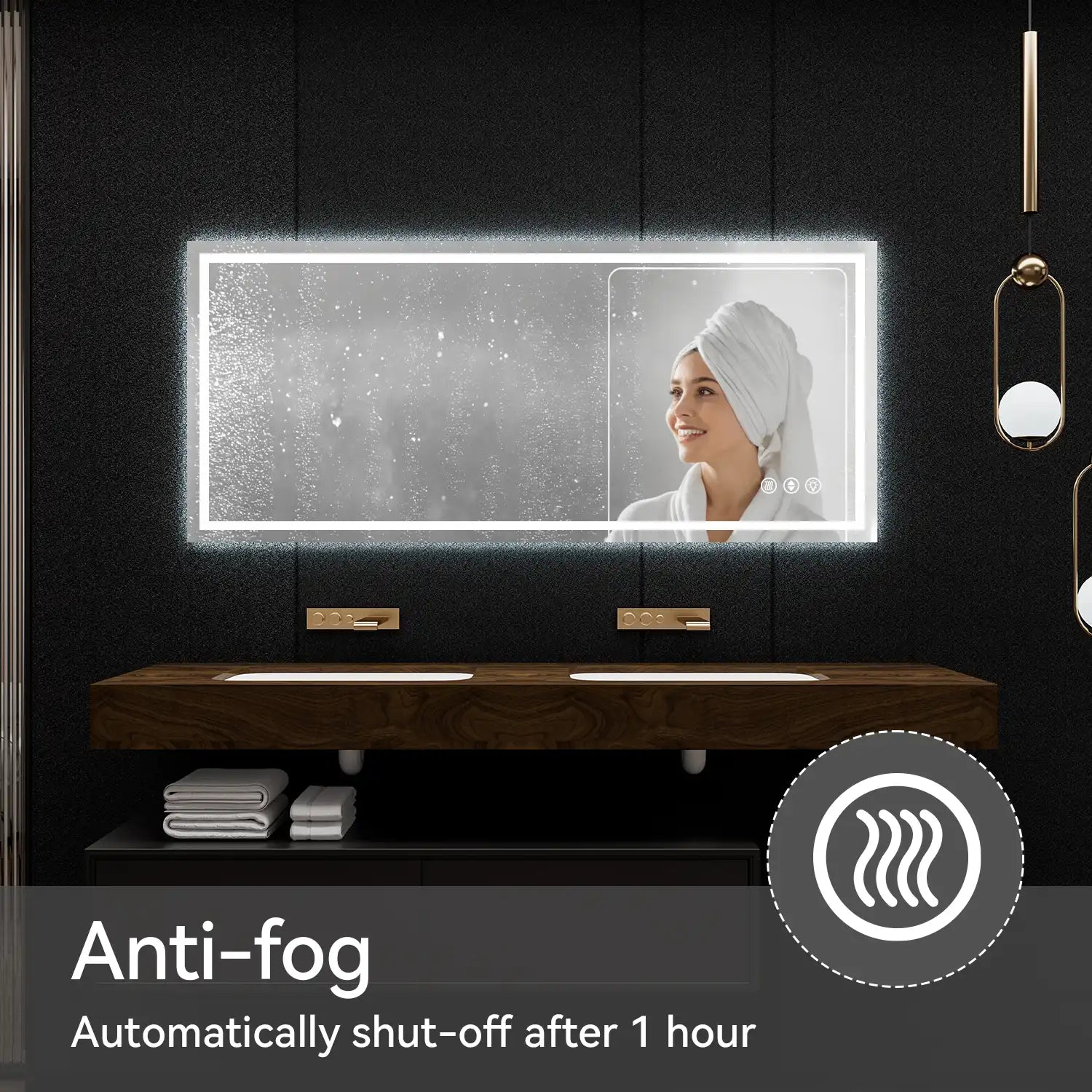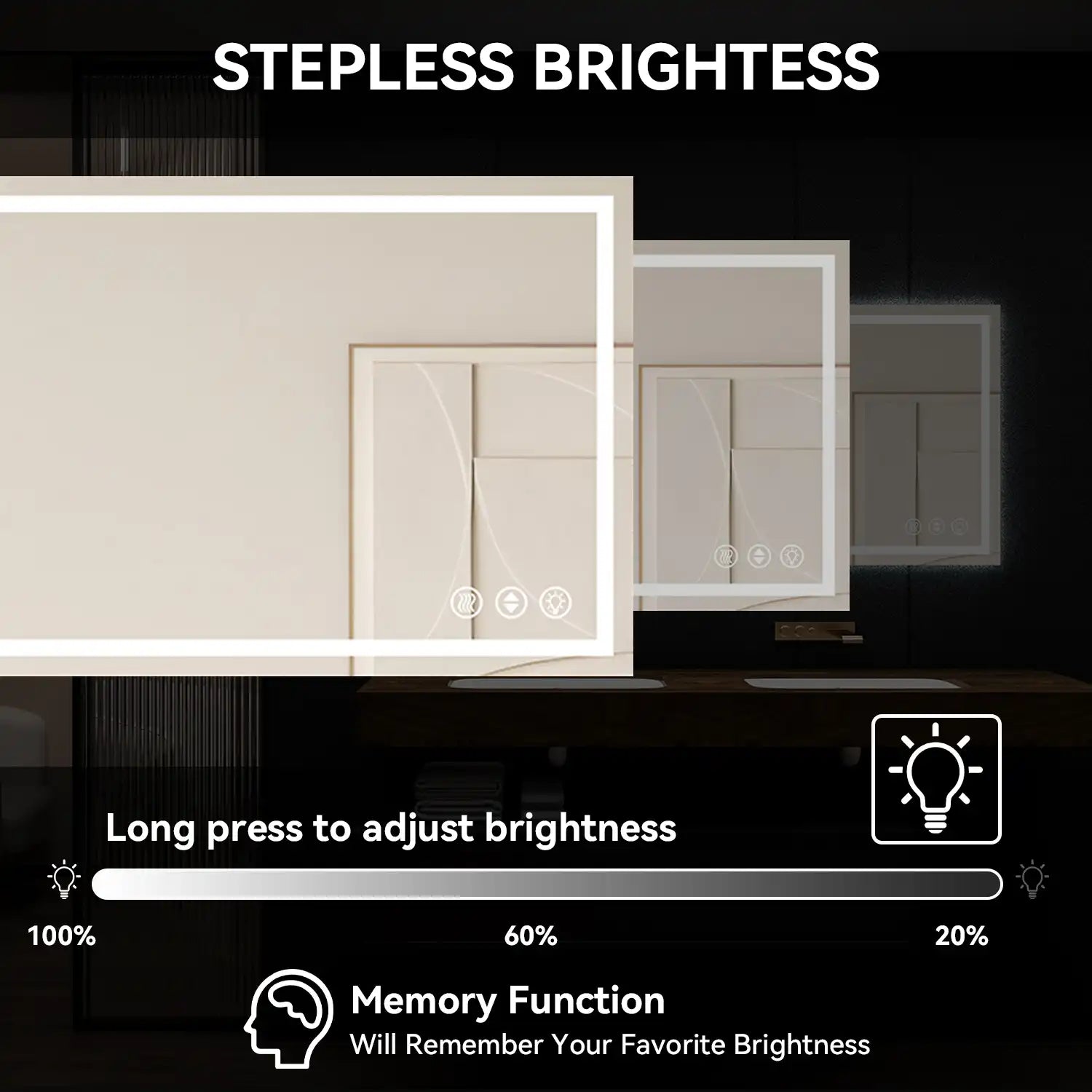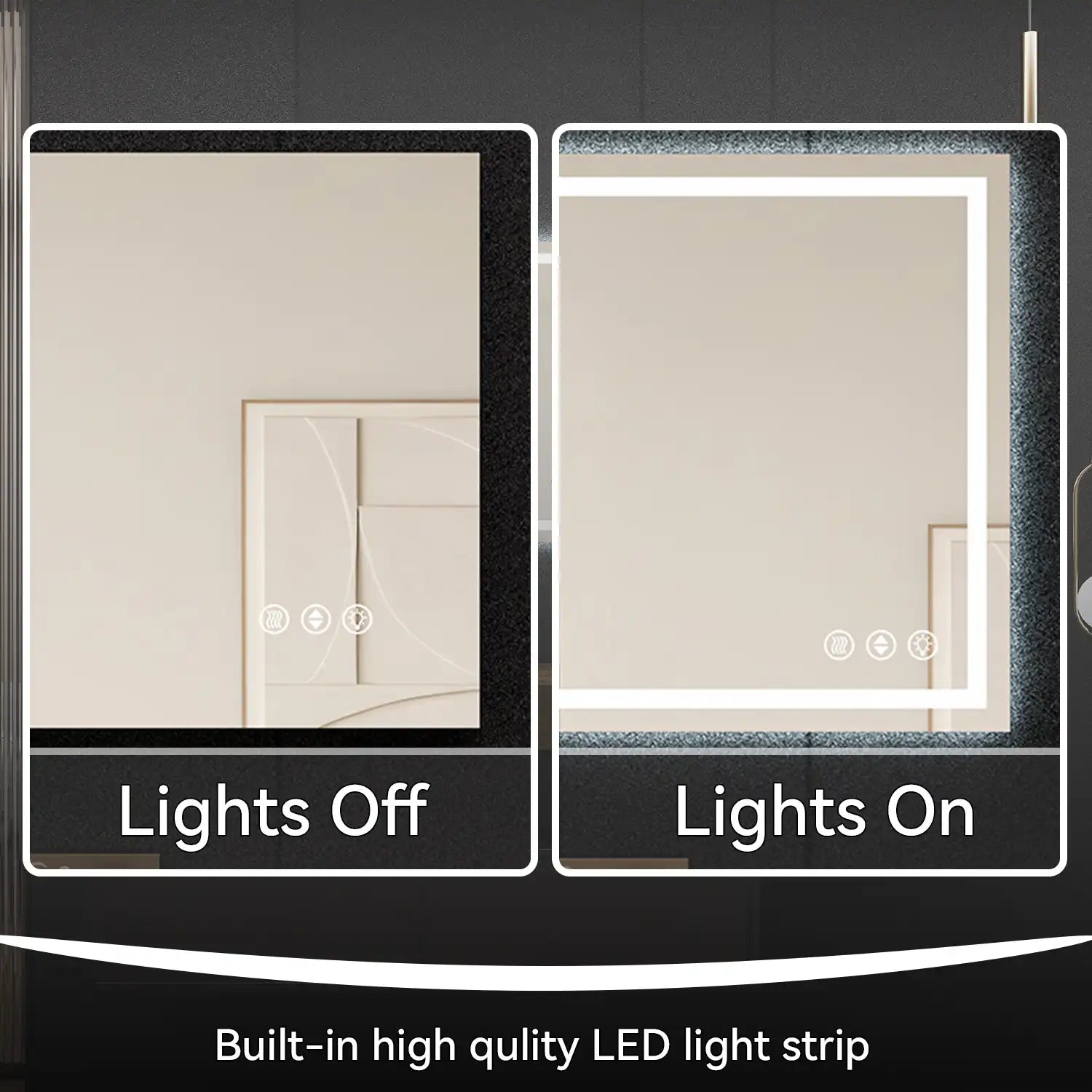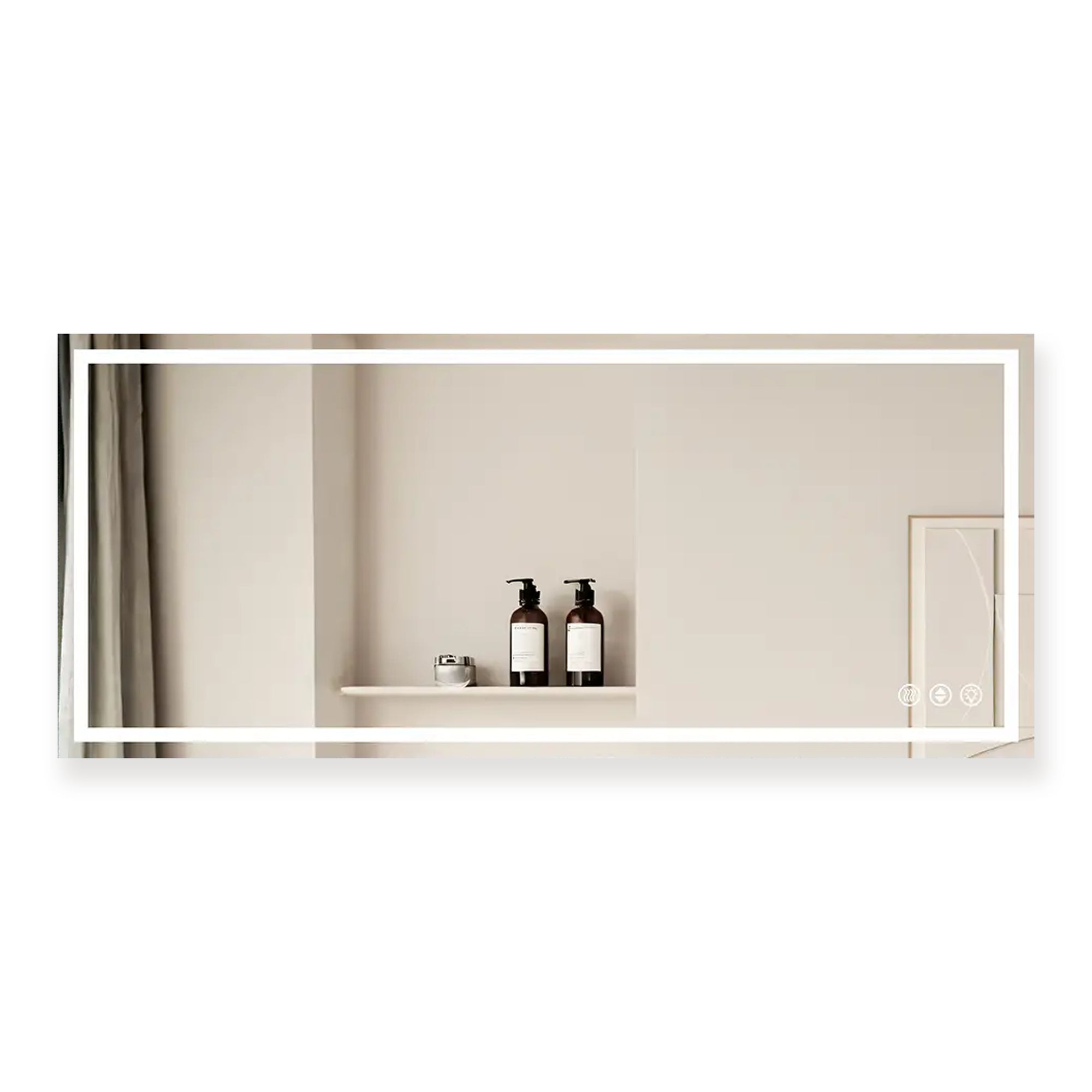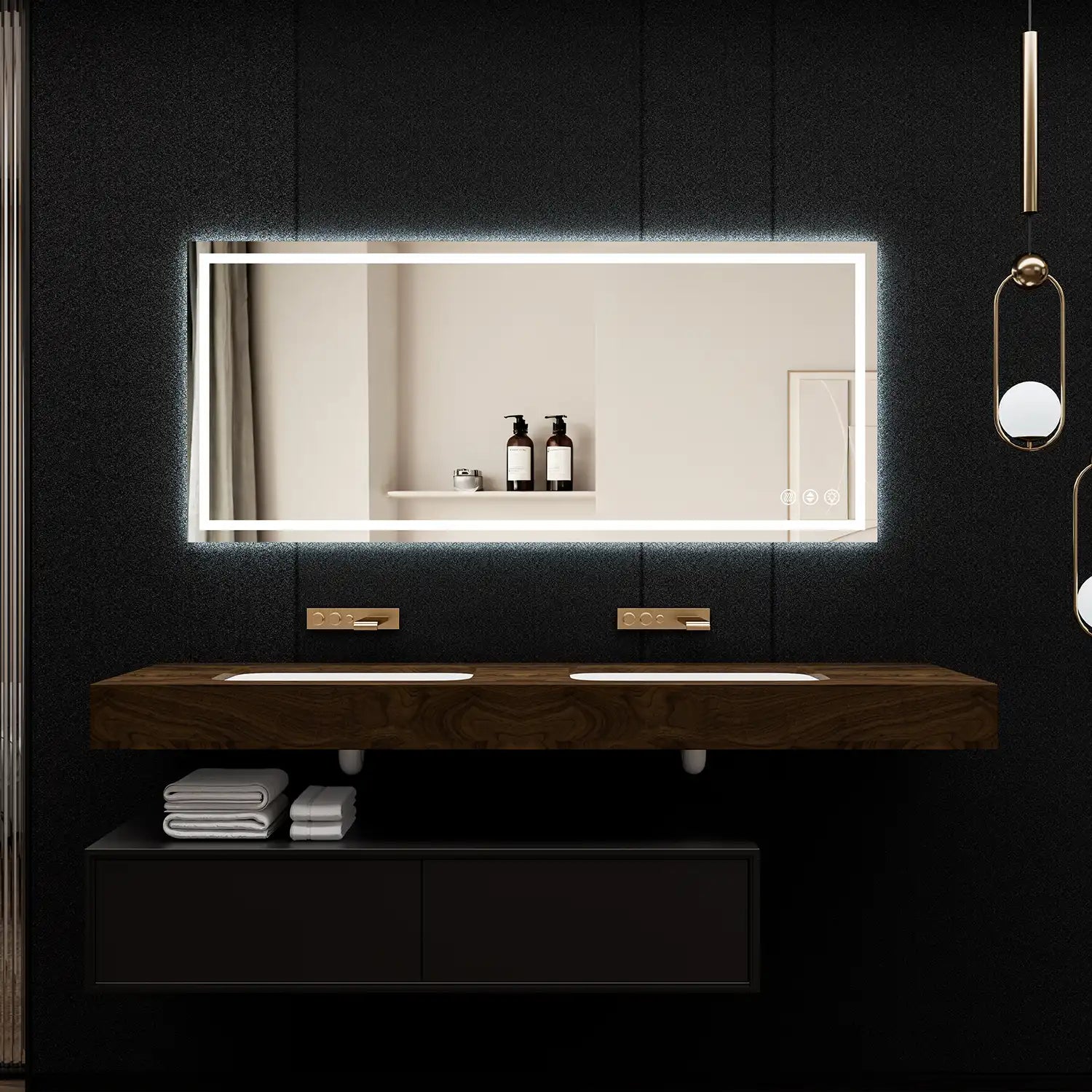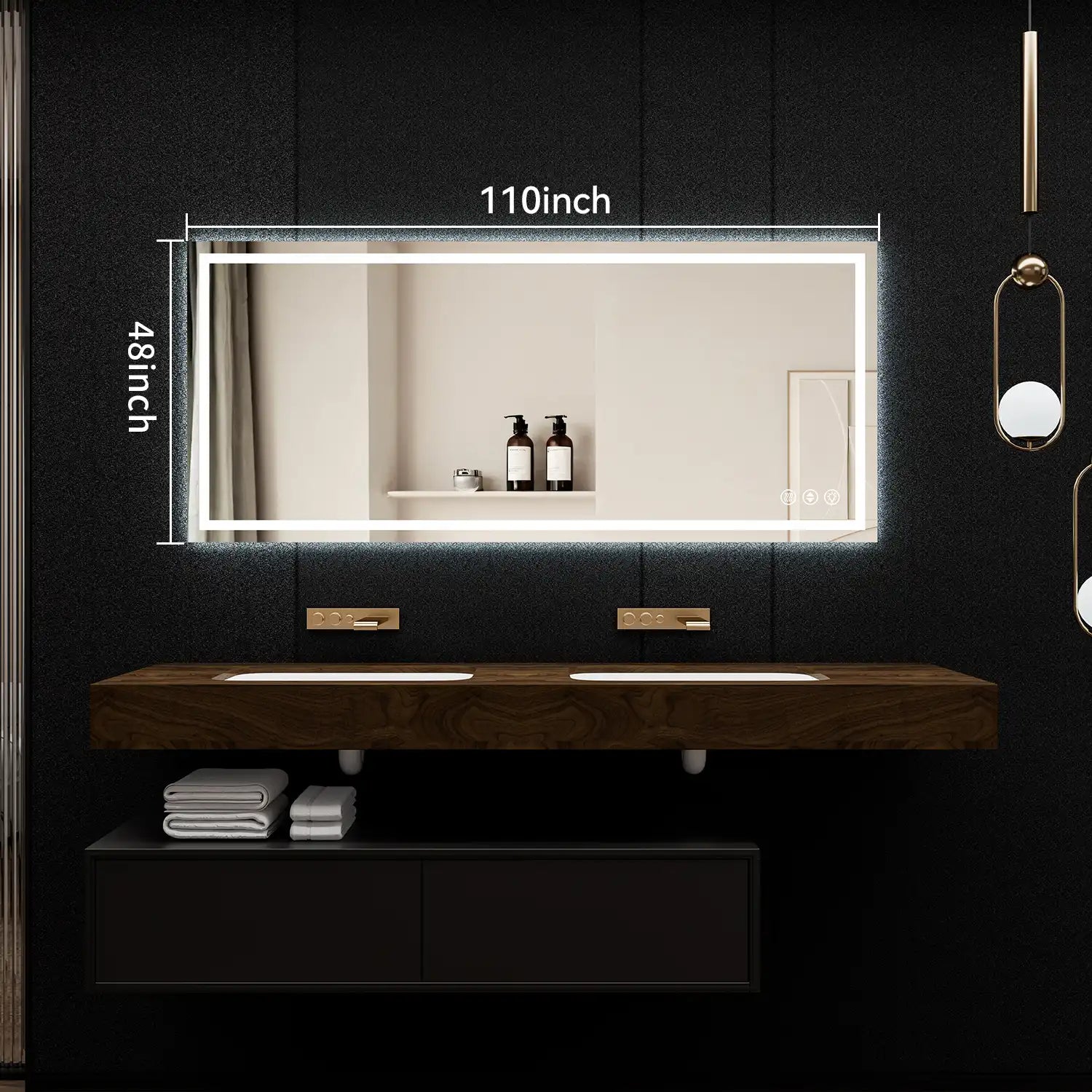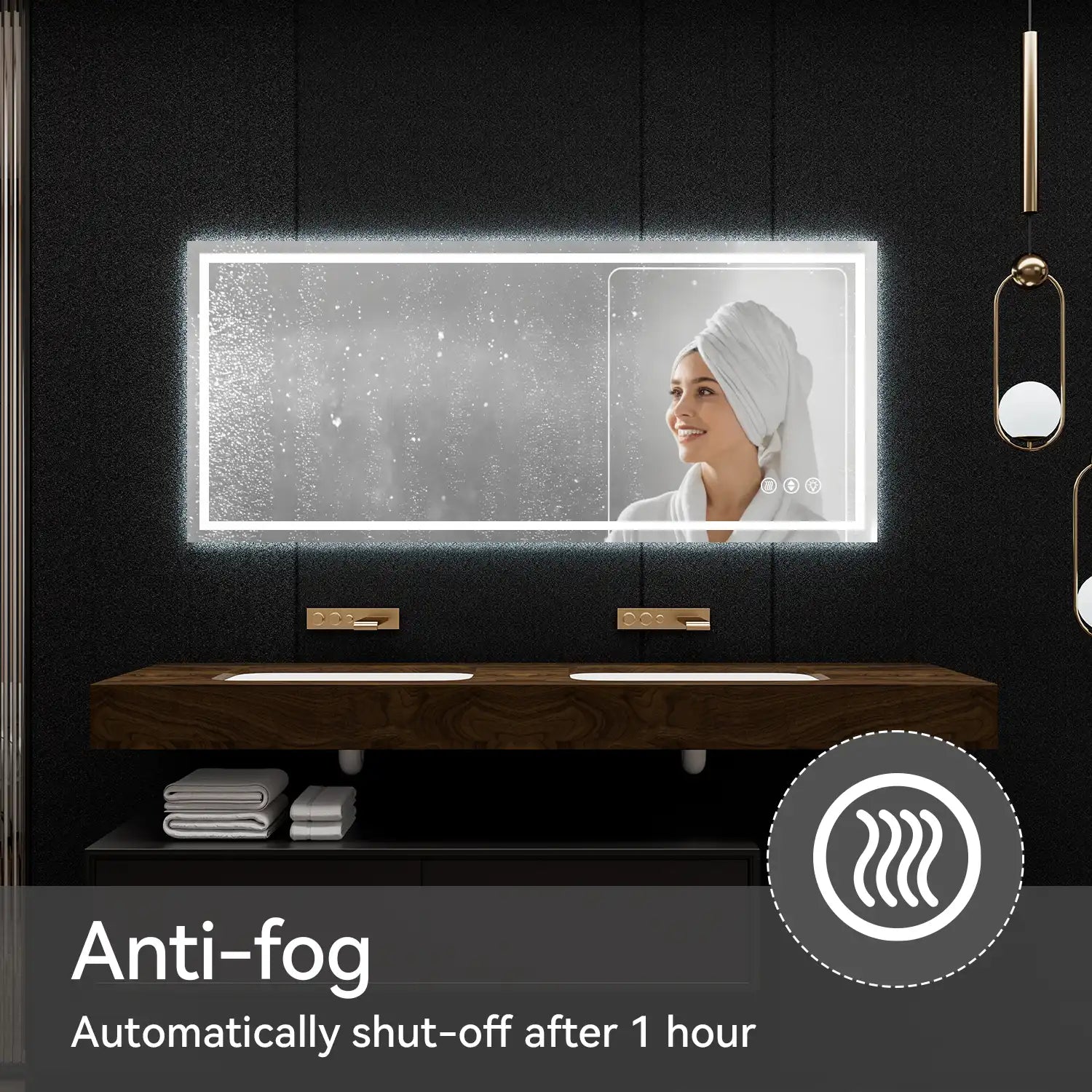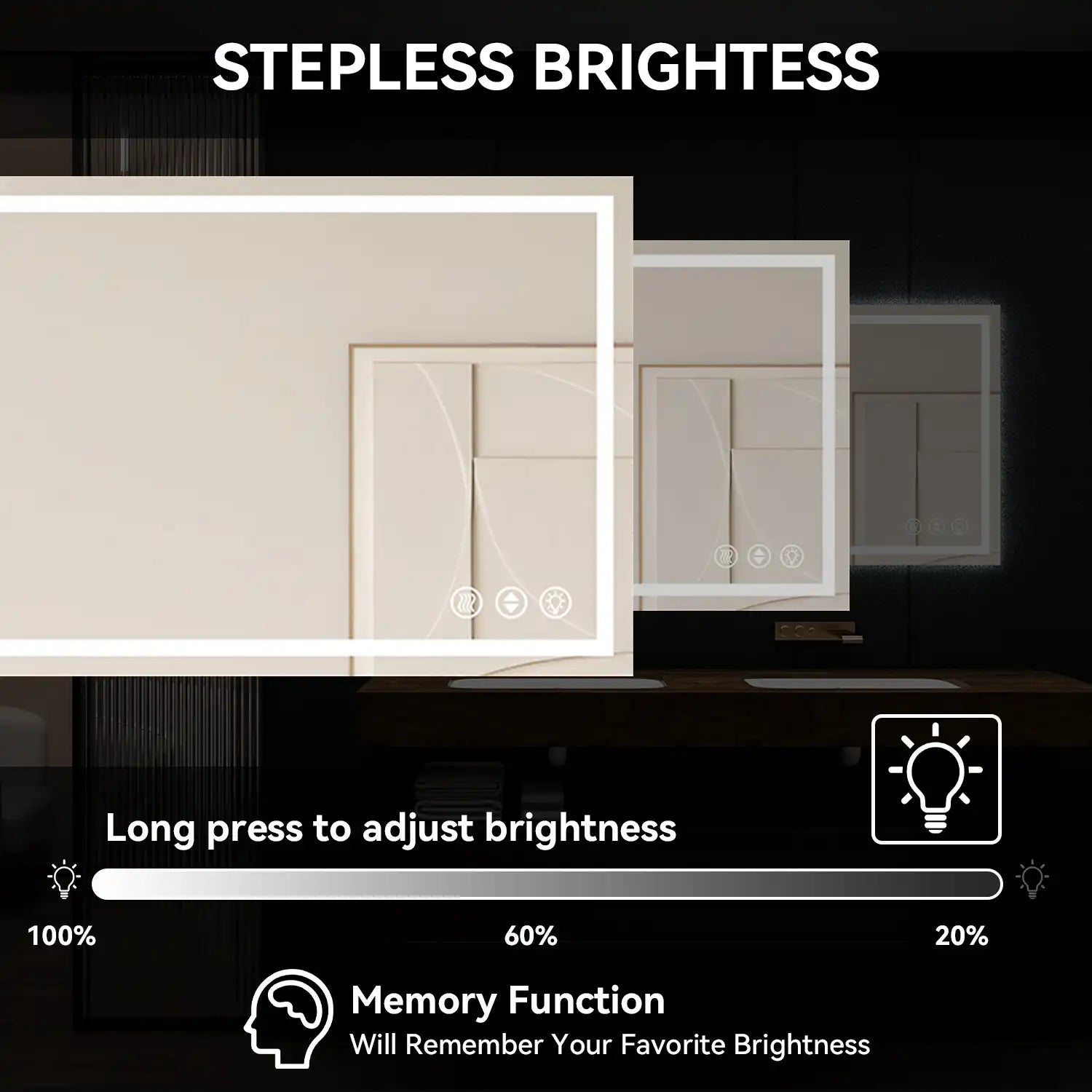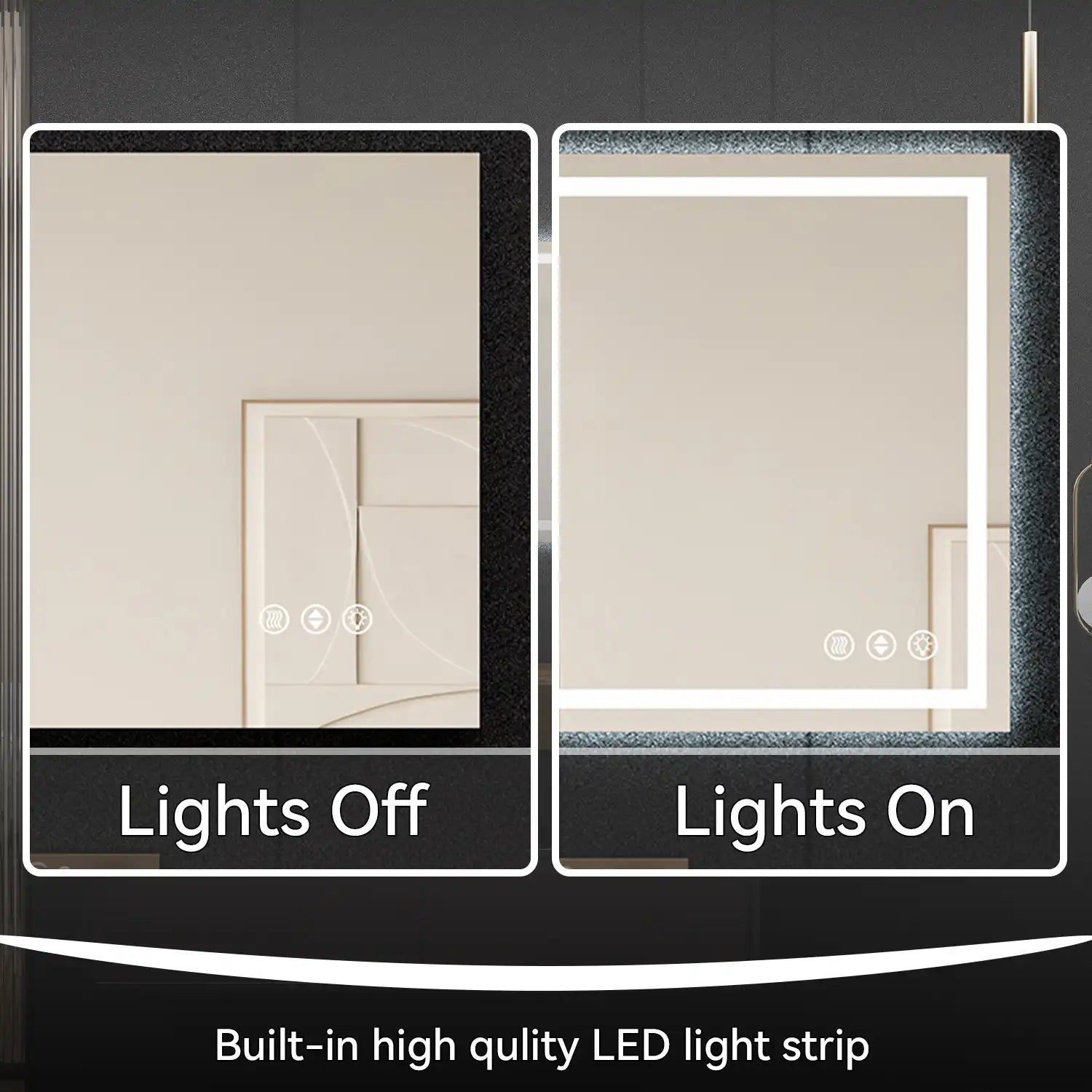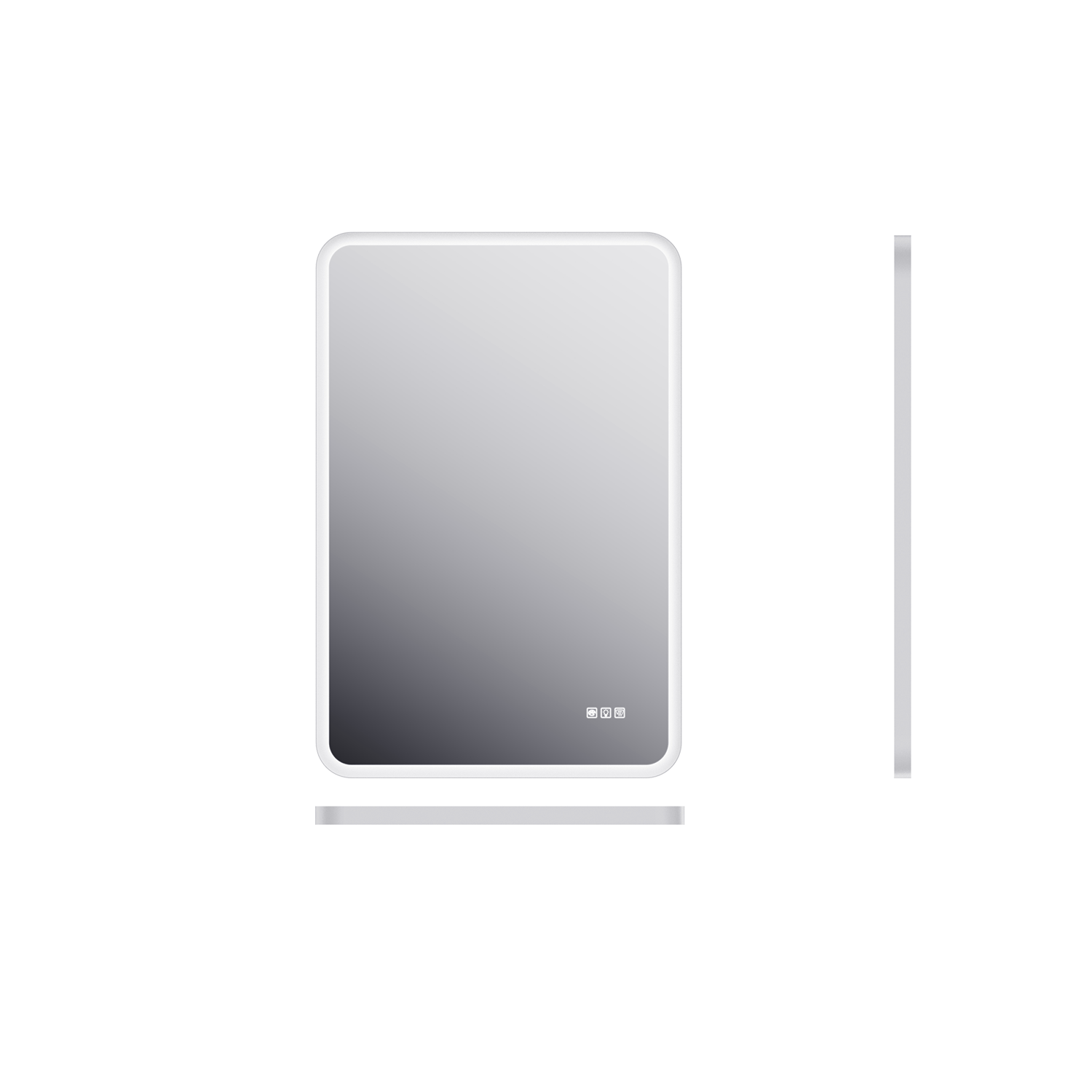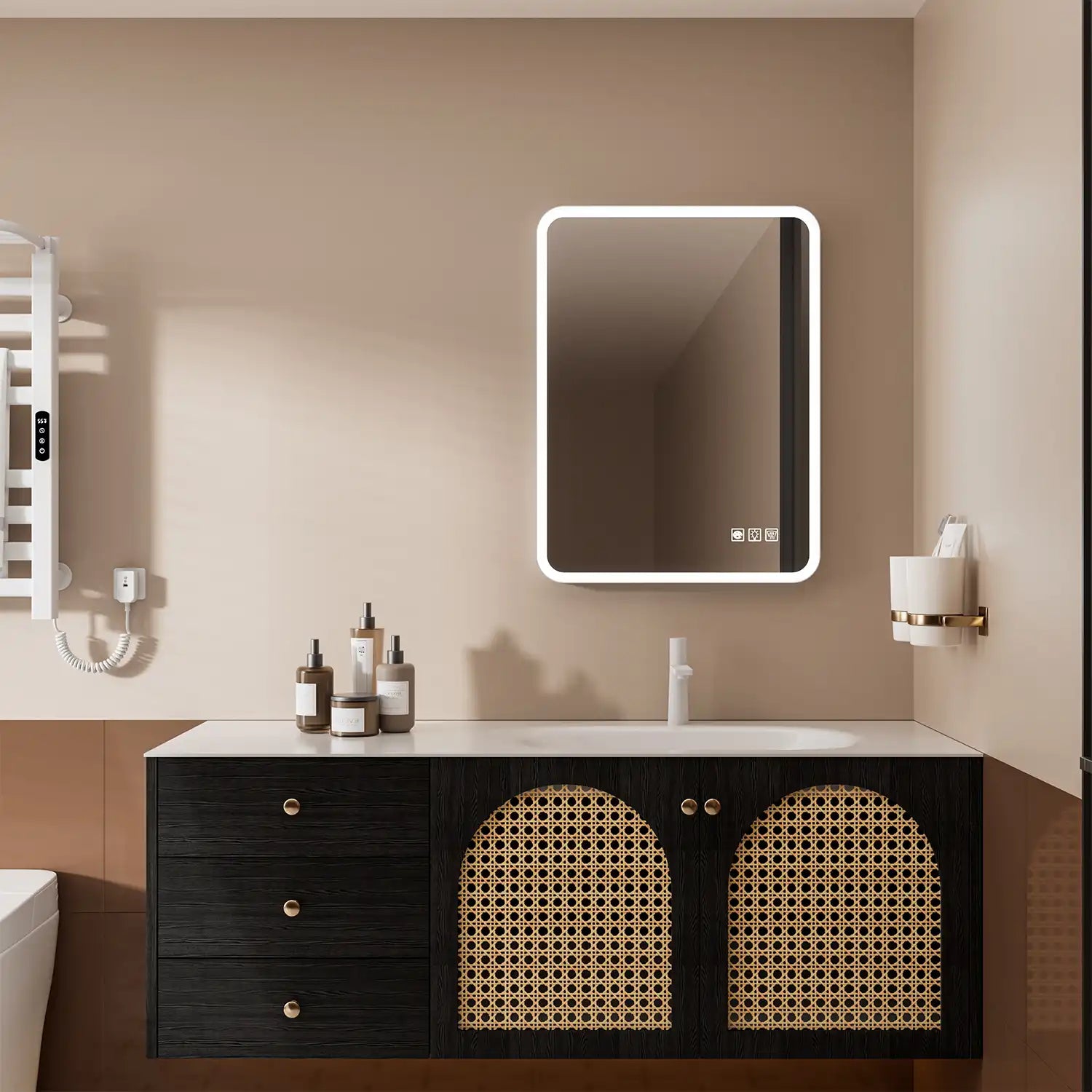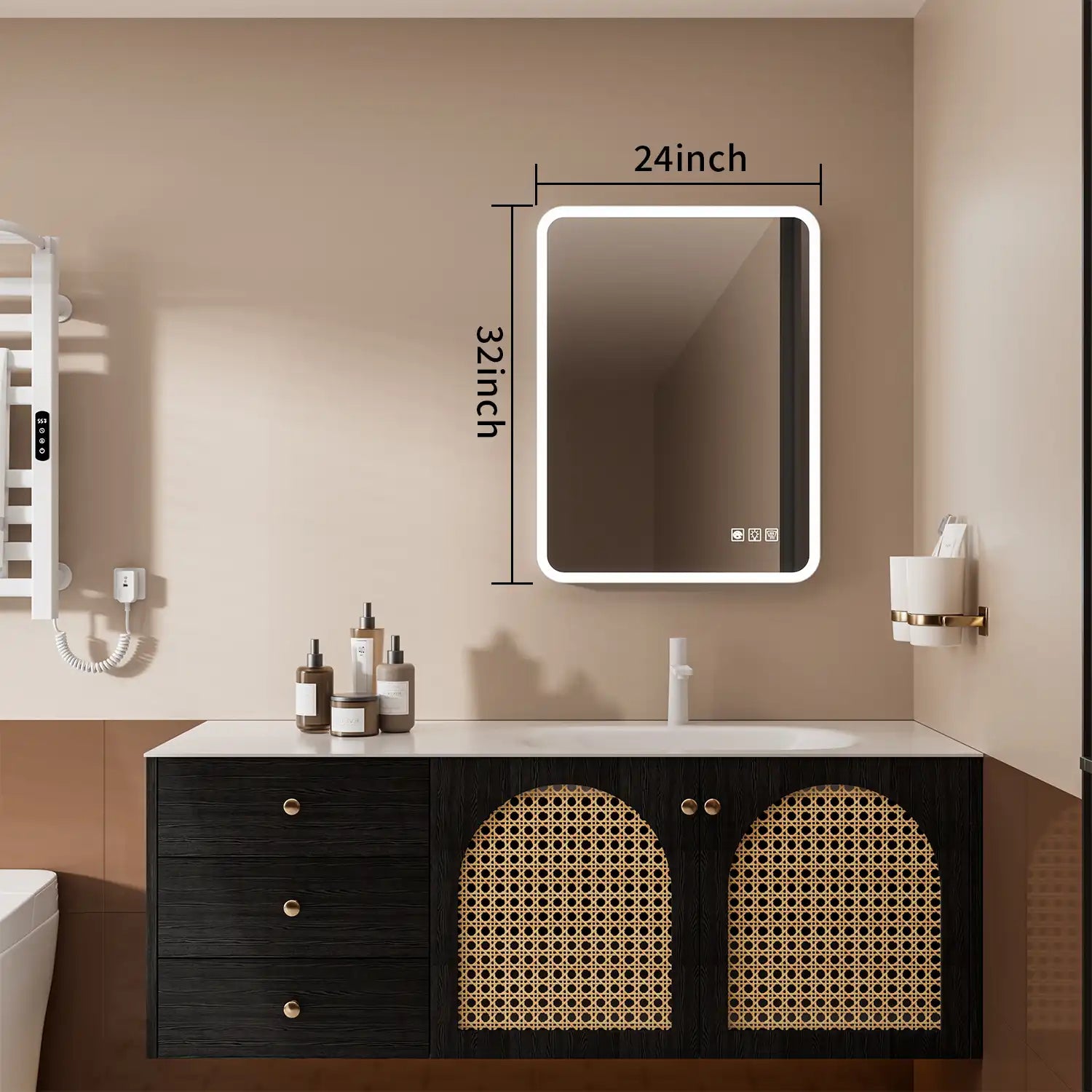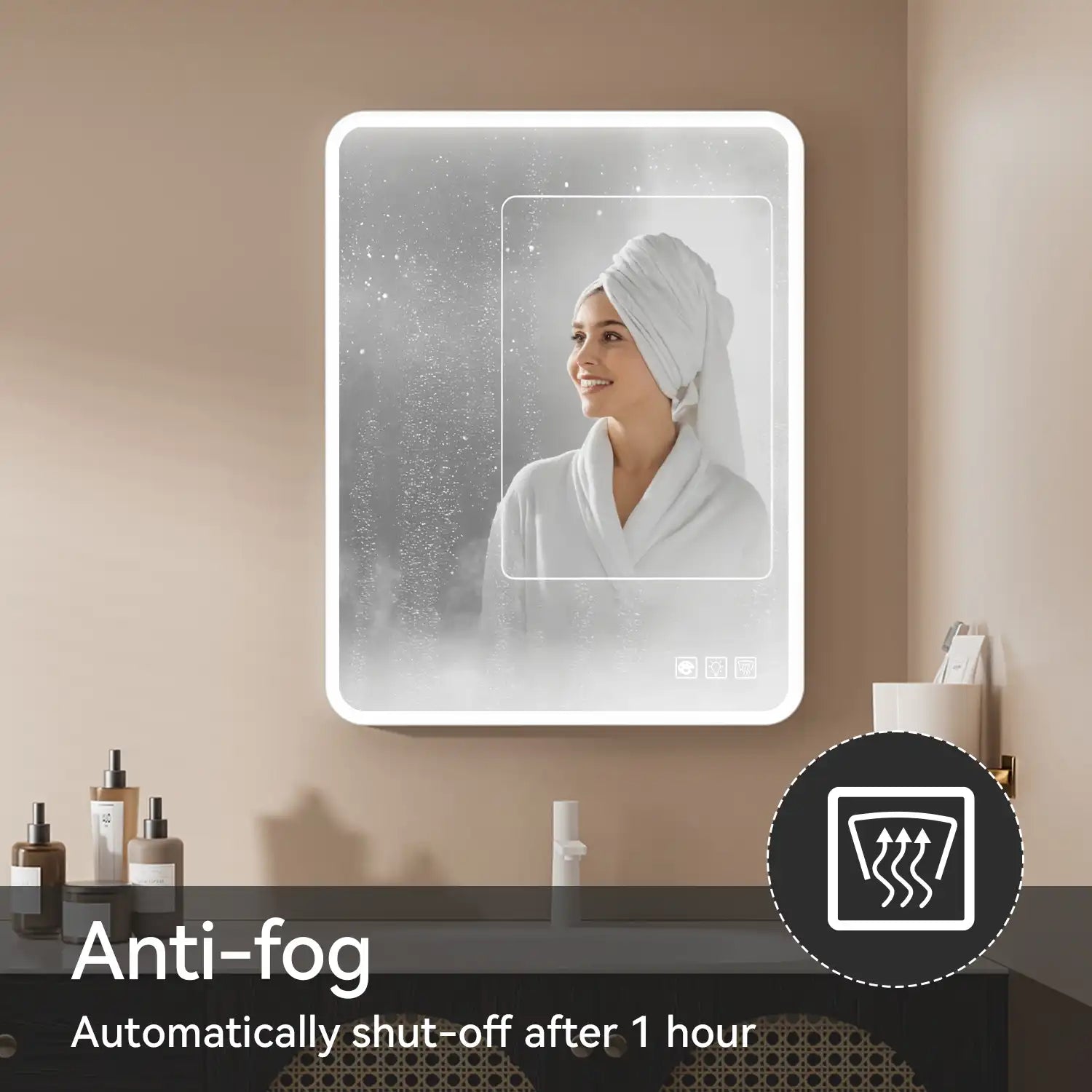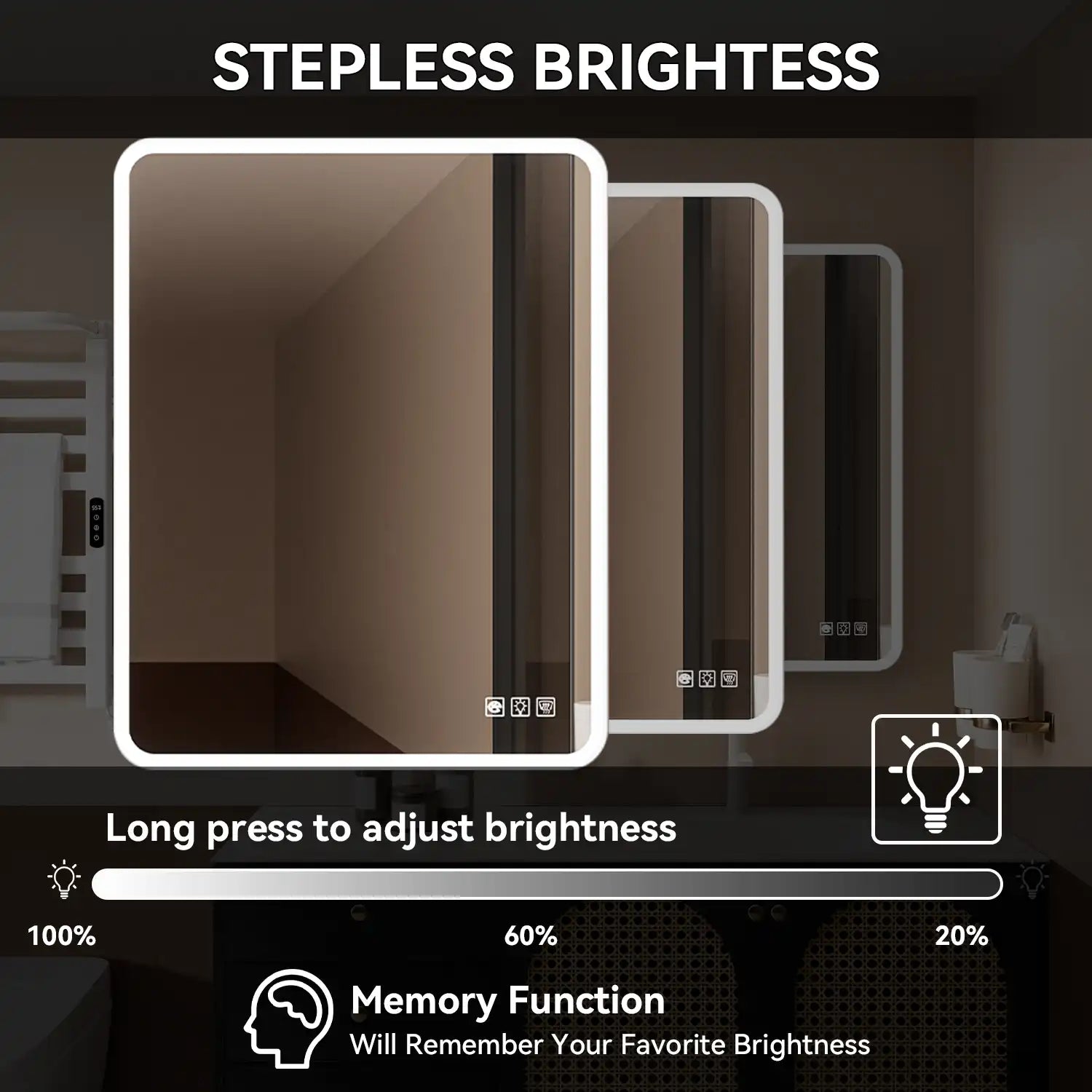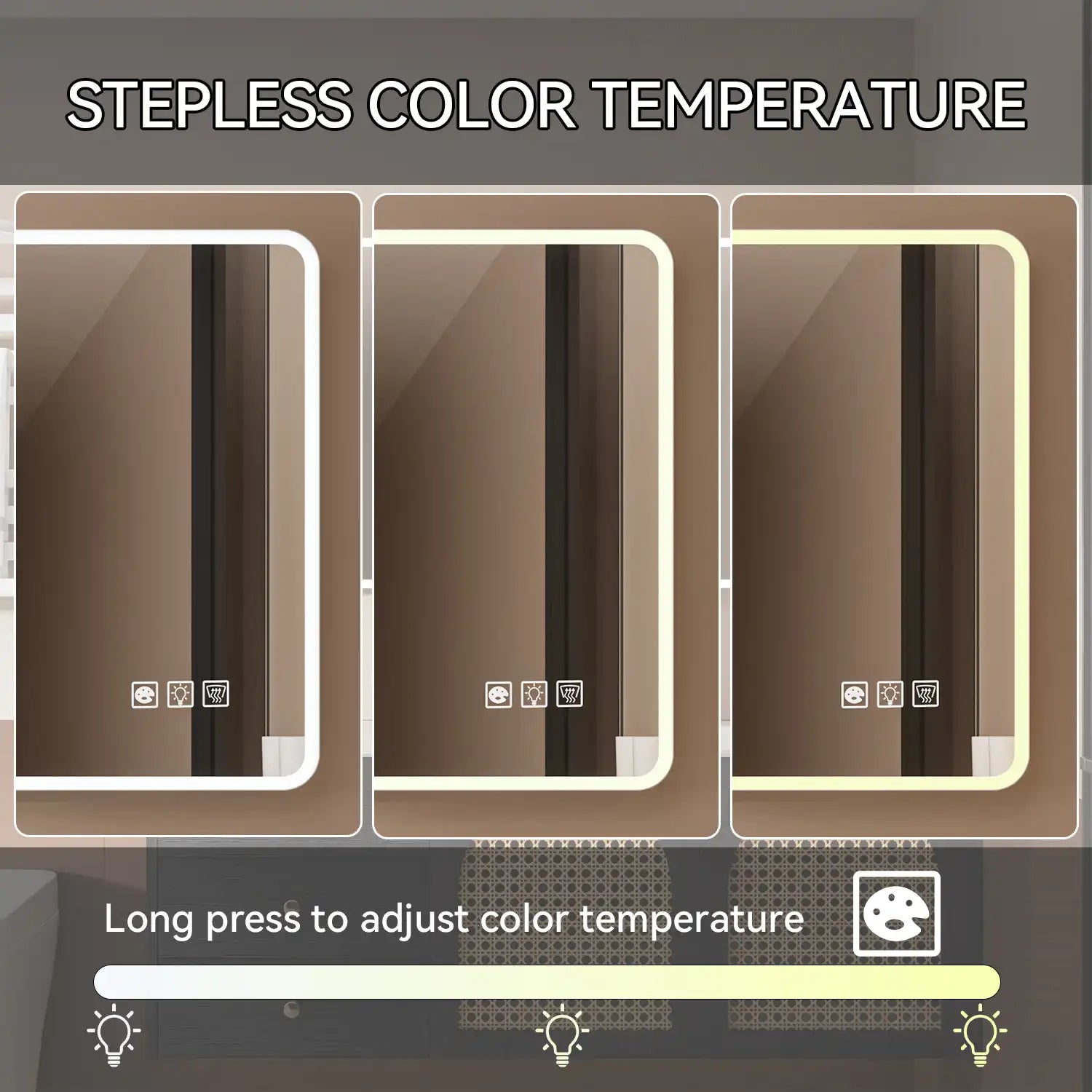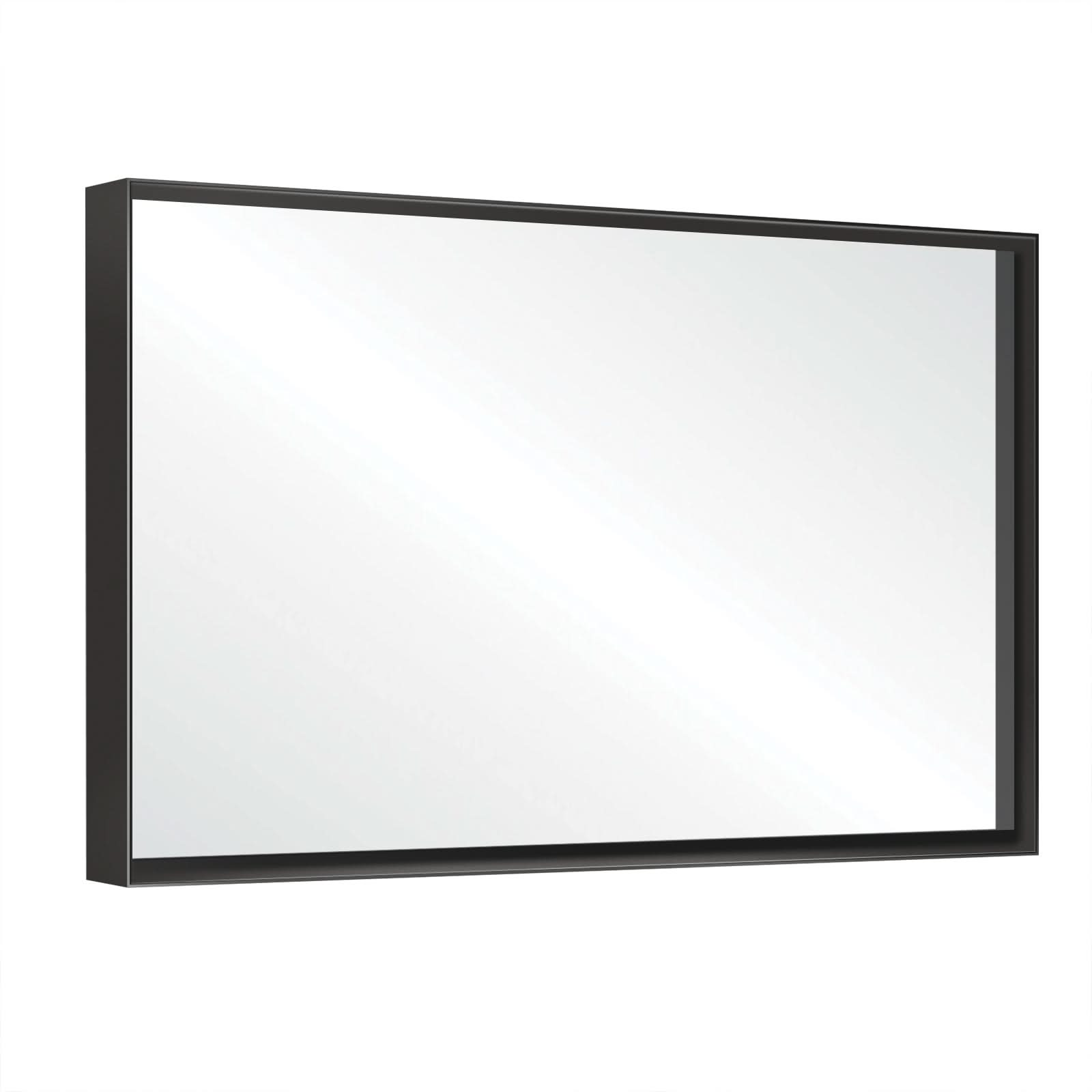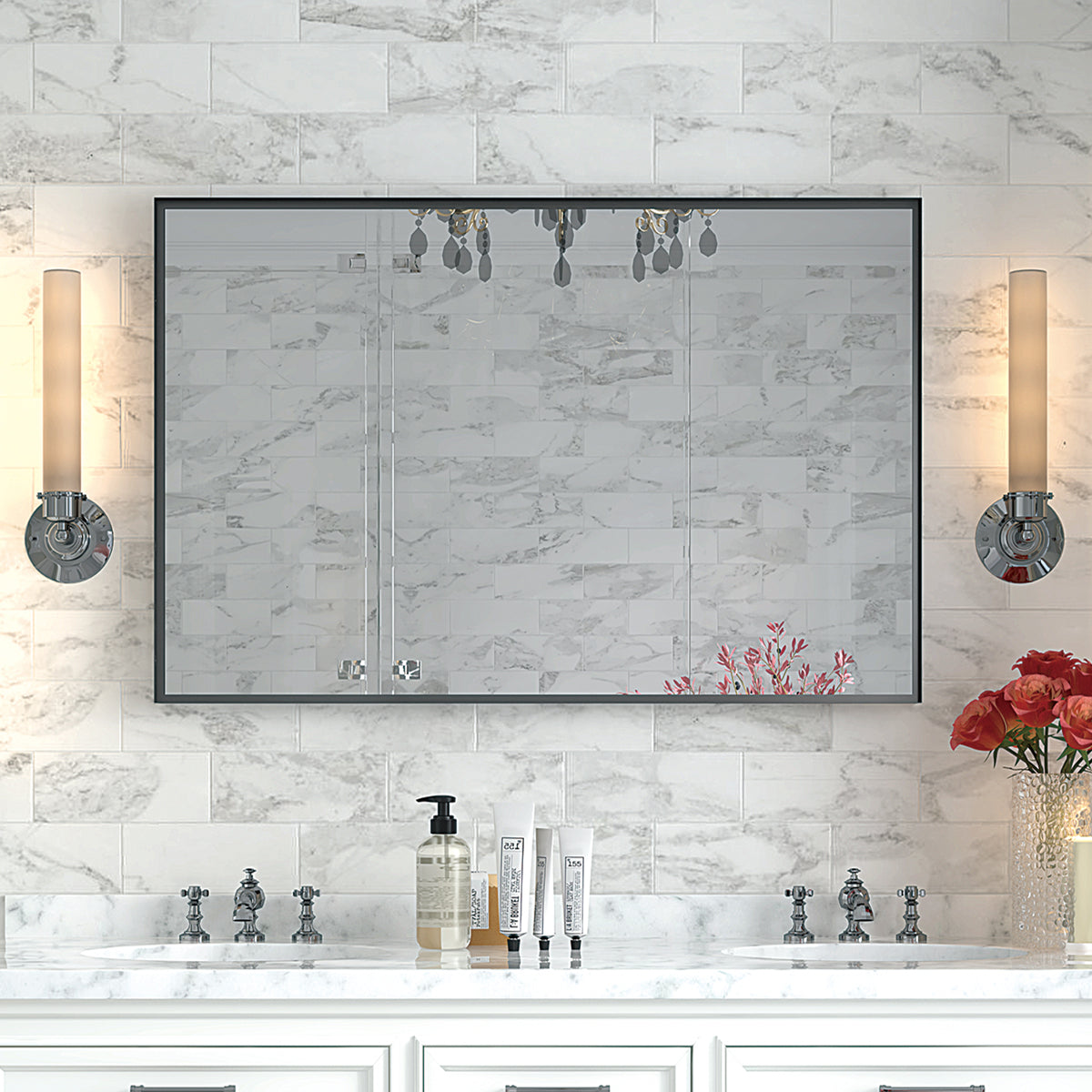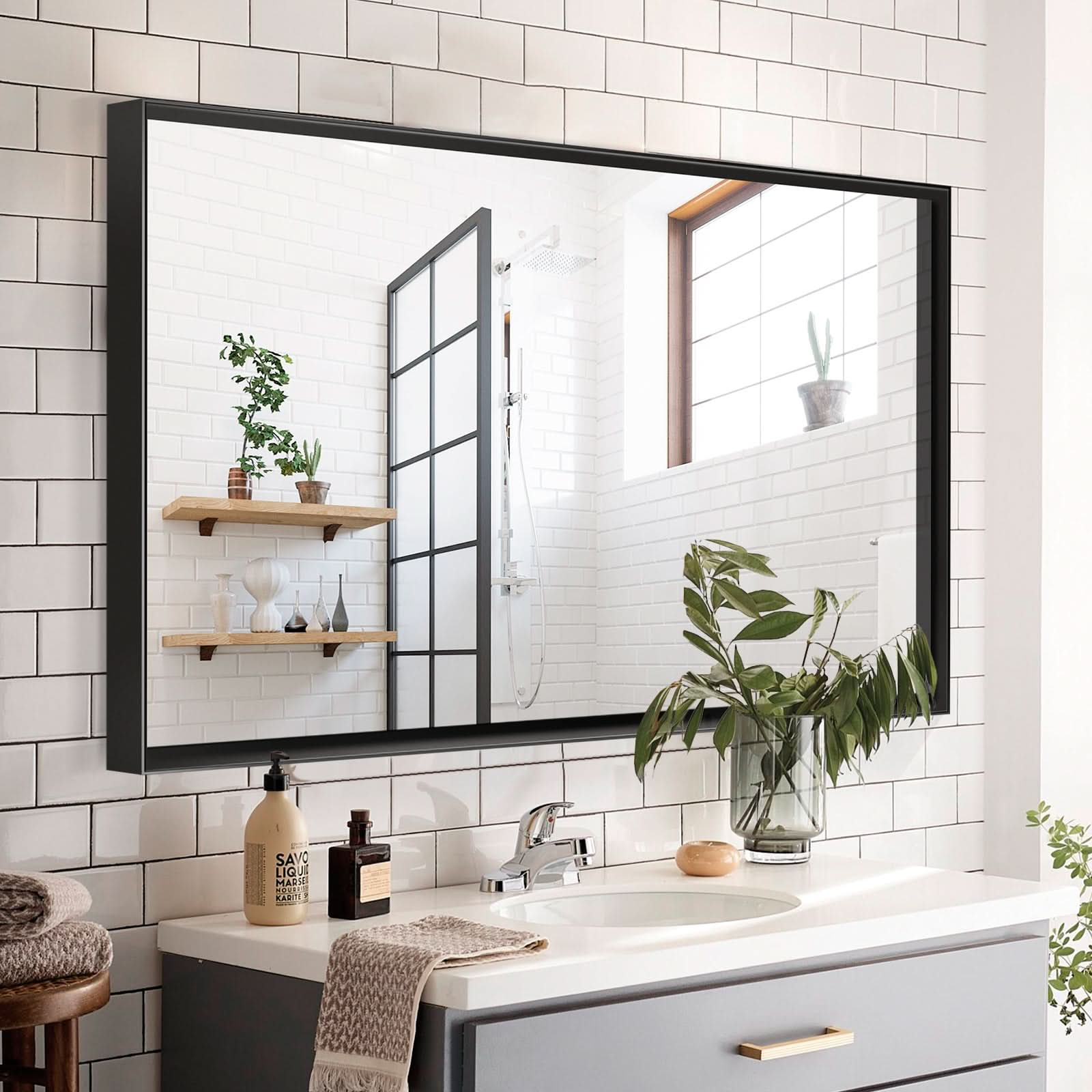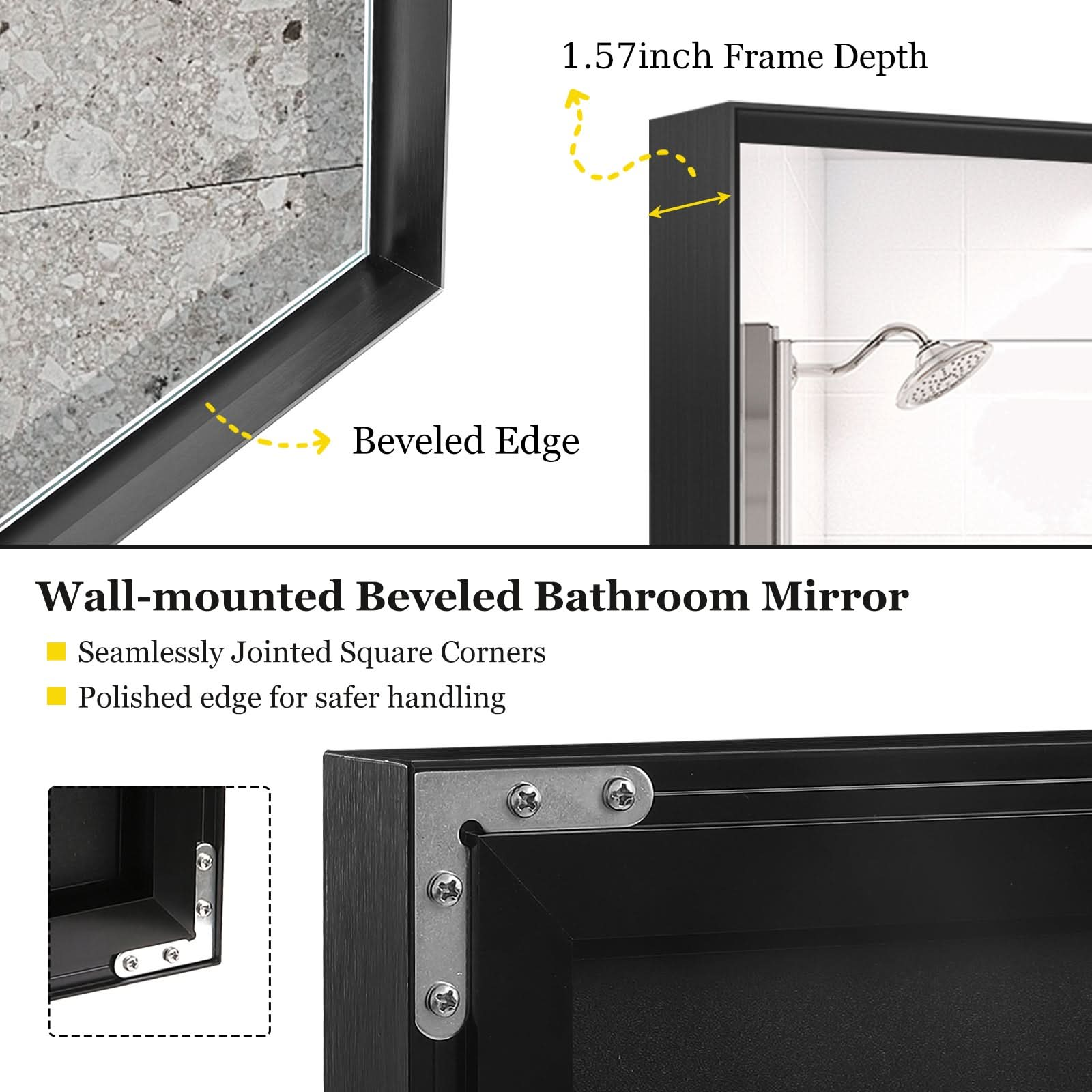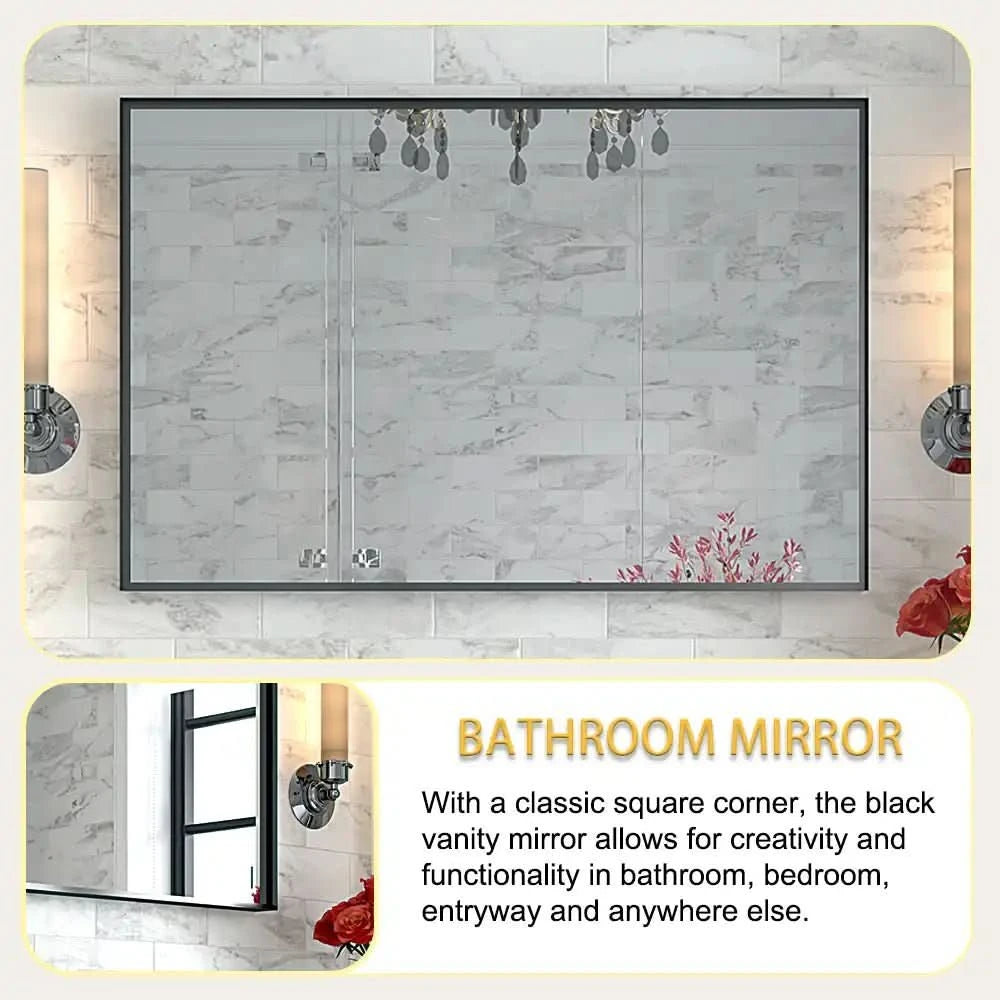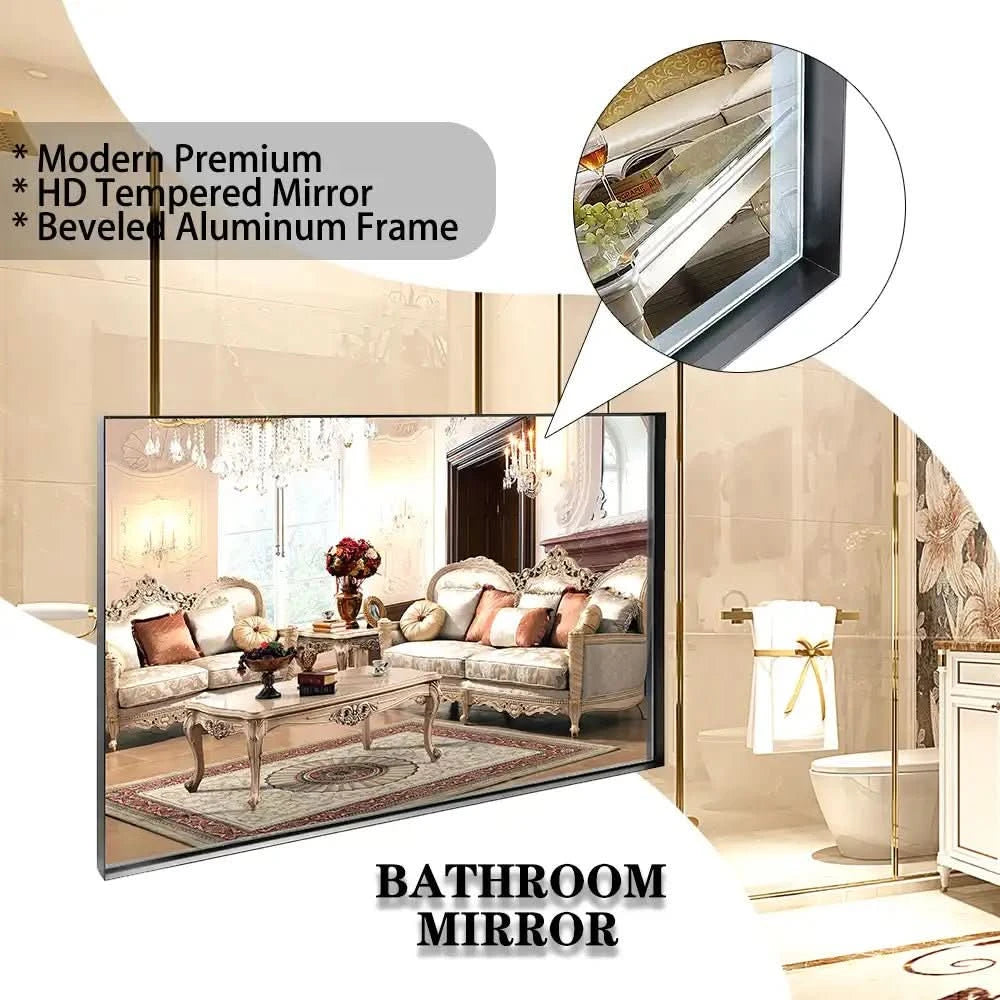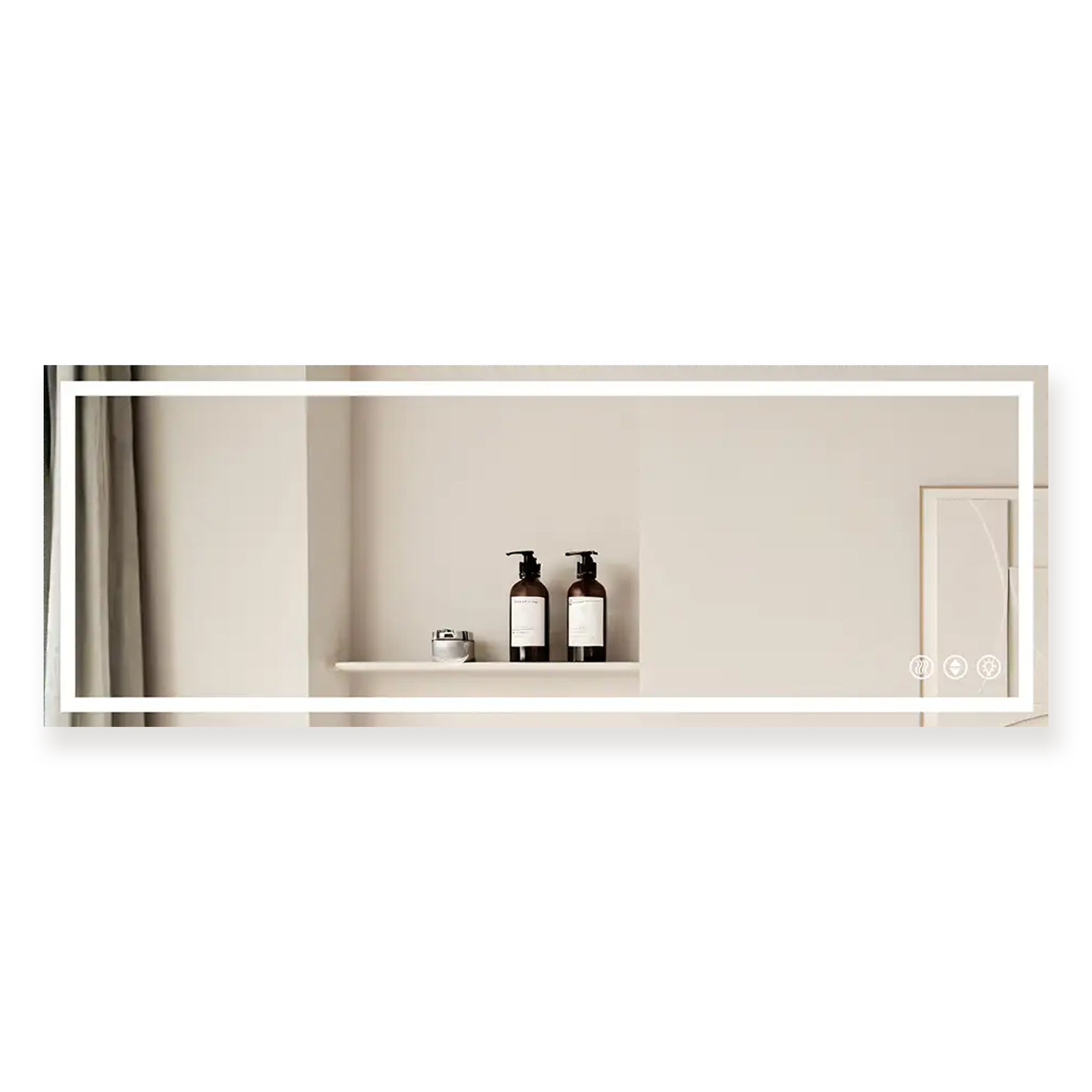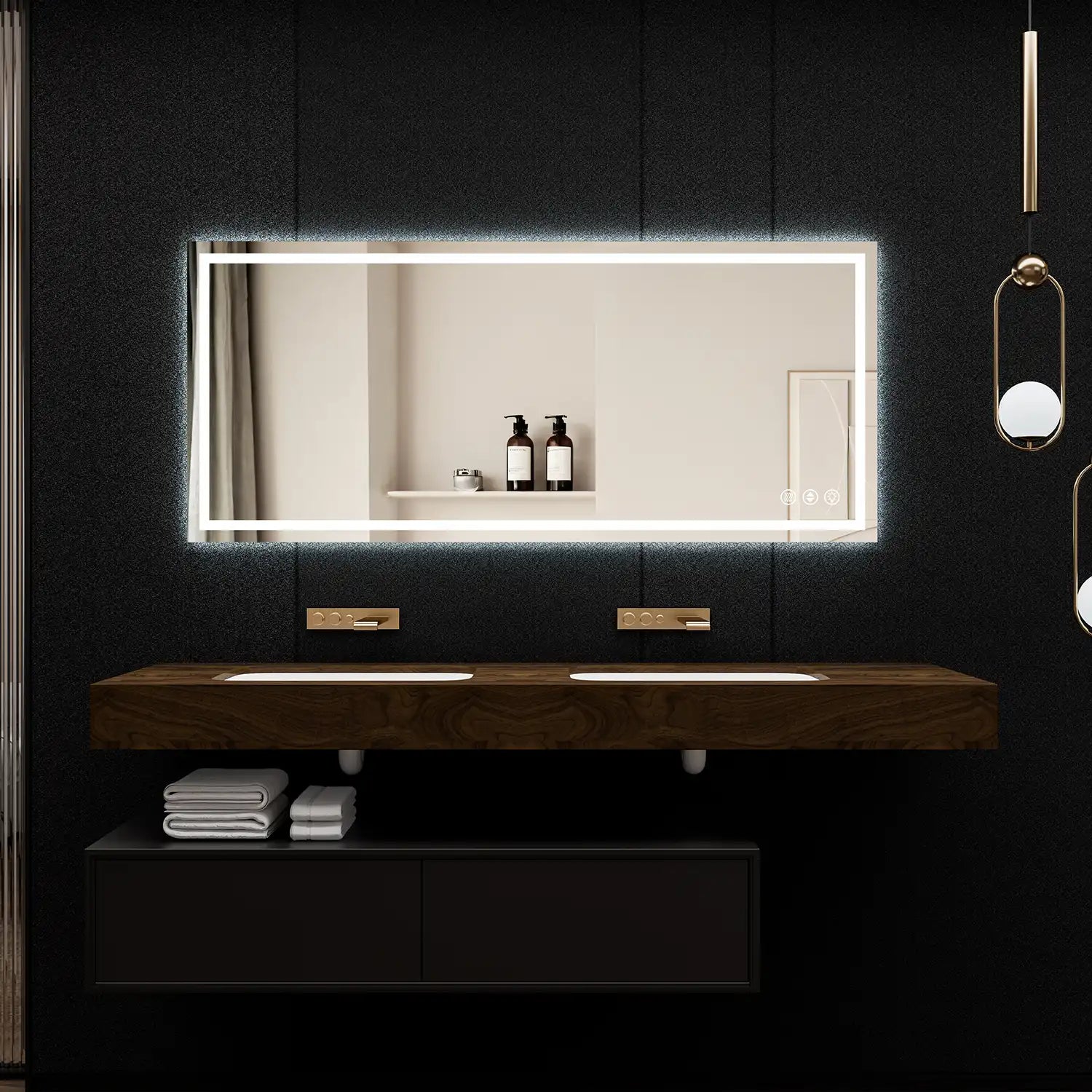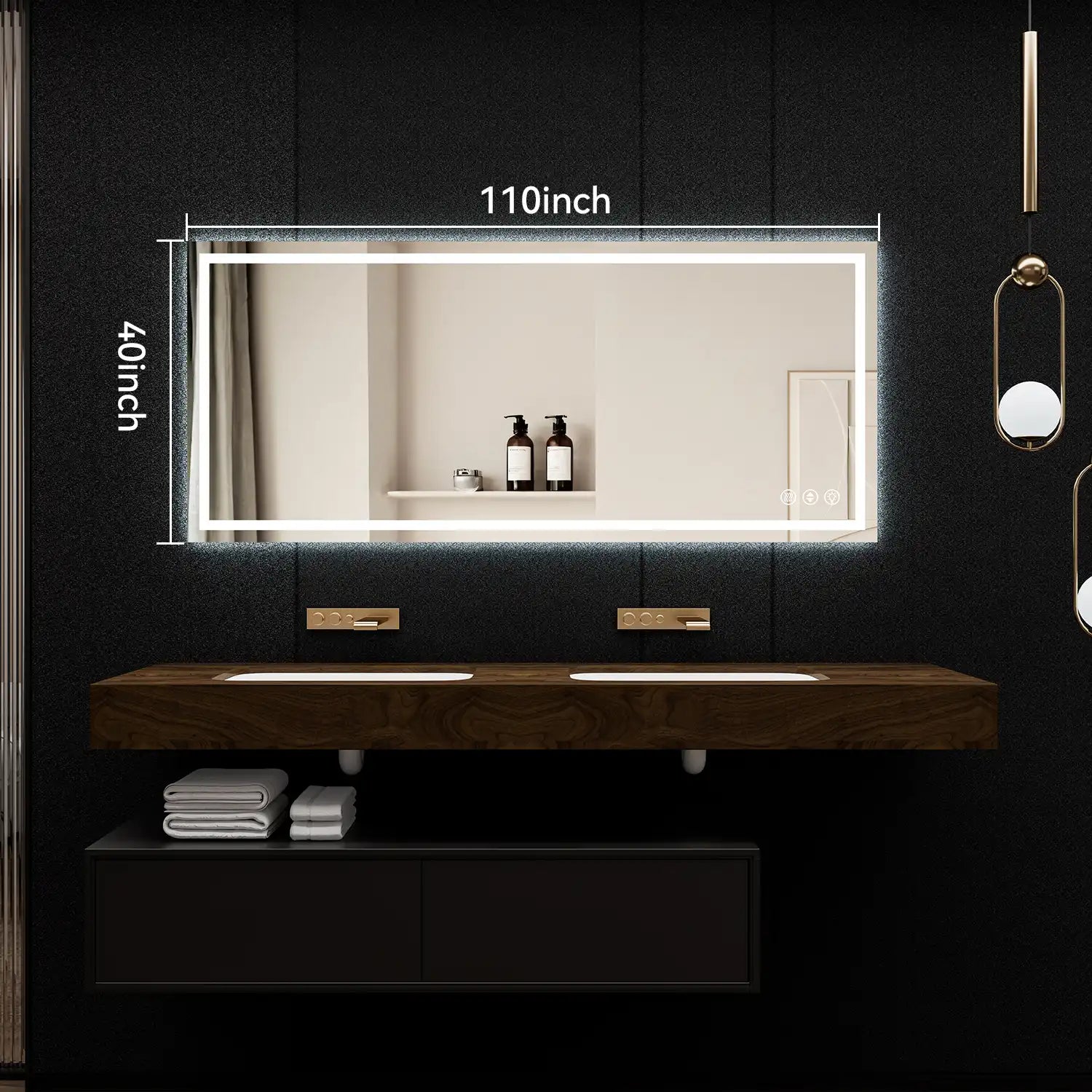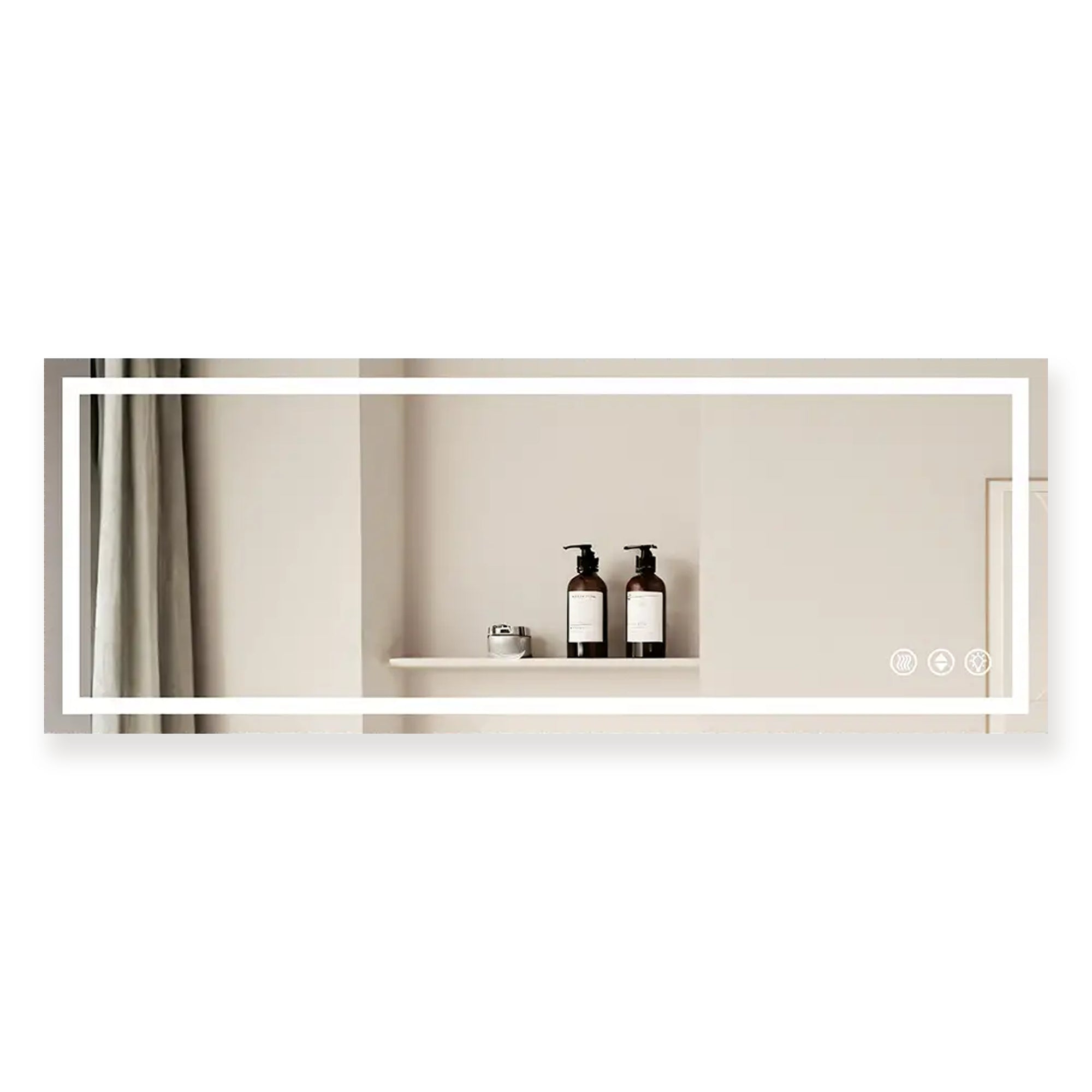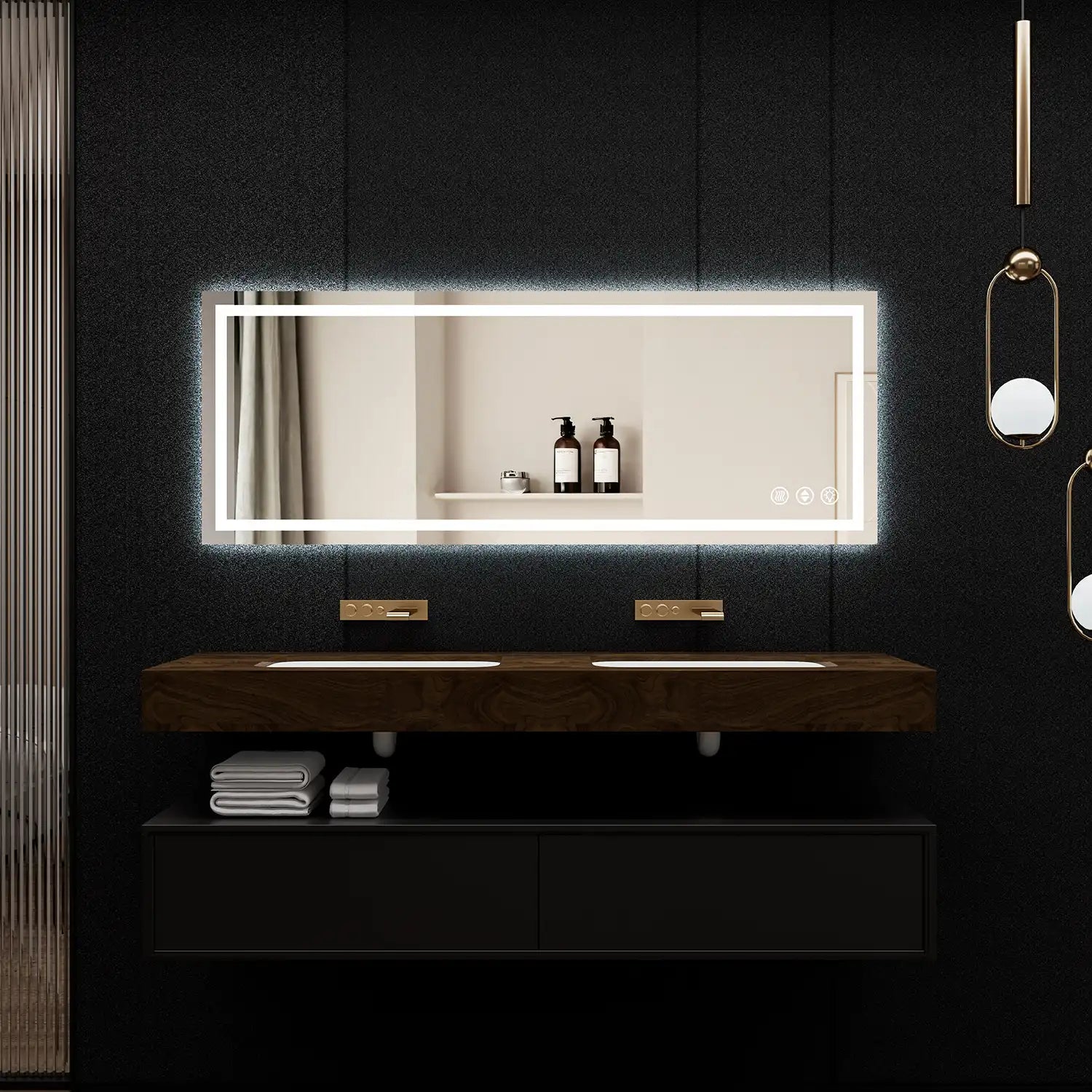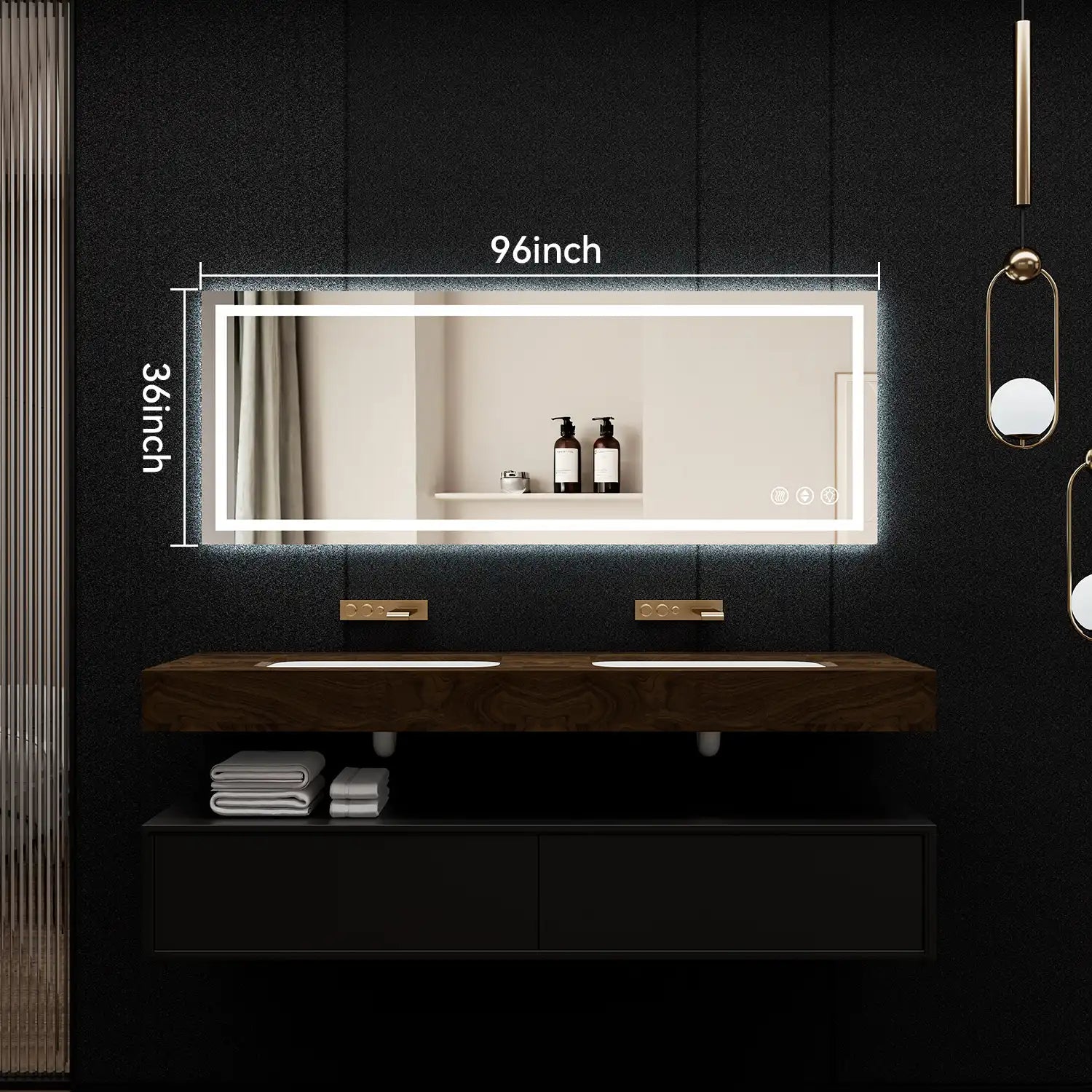Table of Contents
- Why Understand Different Types of Mirrors
- Mainstream Types of Mirrors and Uses
- Installation and Style Selection
- Expert Advice Before Choosing Types of Mirrors
- Benefits of Installing Different Types of Mirrors
- Maintenance and Care Suggestions
- Conclusion
- FAQ
- Related Articles
Introduction
Mirrors are not merely the "last look" before you leave or functional fixtures on bathroom walls. They are both the psychological counselors of space and the directors of light. Research shows (Houzz 2023 survey) that 78% of high-end renovation users consider the impact of types of mirrors on the atmosphere of the space and their daily mood when making a choice. Imagine this: in the morning, you walk into the bathroom, and instead of a cold reflection, you see a smart mirror with soft light, perfectly matching your height, and even displaying the weather forecast – this is not just about seeing yourself, but also setting the tone for your day.
Today, we will comprehensively analyze types of mirrors from the perspectives of ergonomics, humidity adaptability, technology integration, and environmental sustainability to help you find the one that suits you best.
1. Why Understanding Types of Mirrors Matters?
In bathroom and home design, types of mirrors are not only optical tools but also an invisible force that enhances the quality of life. The right types of mirrors can expand the space, optimize the flow of light, and form an integrated design with walls, lighting, and storage systems.
For mid-to-high-end consumers, the focus when choosing types of mirrors is not just on "whether they look good", but on balancing functionality, aesthetics, durability, and long-term value. For instance, the American Society of Interior Designers (ASID) reported in 2022 that high-reflectivity types of mirrors in small bathrooms can make users perceive the space as being 30% larger, and anti-fog and moisture-resistant properties directly affect the user experience after five years.
2. Mainstream Types of Mirrors and Their Applications
2.1 Plane Mirrors (Flat Mirrors) – The Most Versatile Types of Mirrors
Plane Mirrors are the most common types of mirrors, like the "white shirt" in the home furnishing world, never going out of style. They reflect true images and are suitable for almost all interior styles. In bathrooms, these types of mirrors can be combined with backlighting, meeting the needs of makeup and shaving while creating a soft light effect.

2.2 Spherical Mirrors (Convex & Concave) – Expanding Field of View and Detail Presentation
- Convex Mirrors: This type of mirrors, similar to wide-angle cameras, expands the field of view and is often used in security systems or to create unique visual effects.
- Concave mirrors: These types of mirrors focus light and are suitable for scenarios where clear details are needed, such as a dressing table or high-precision care area.
- Expert advice: In the bathroom, using a small-sized concave type of mirrors in combination with the main mirror can enhance the expression of makeup details.

2.3 Non-Reversing Mirrors – Precise Presentation
This type of mirrors can present images without left-right reversal, which is particularly important for places such as dance studios, gyms, and barber shops where precise movements or details are required. In high-end bathrooms, these types of mirrors are also an "invisible weapon" for creating a precise makeup experience.
2.4 Two-Way Mirrors – The Fusion of Privacy and Technology
Two-way mirrors are a special type of mirrors that reflect on one side and are transparent on the other. These types of mirrors are commonly seen in security monitoring or privacy protection scenarios. In recent years, they have also entered the high-end bathroom market, combined with smart screens to achieve dual functions of makeup and information display.
2.5 Highly Reflective Mirrors – Brightness Boosters
This type of mirrors is suitable for bathrooms with insufficient light, significantly enhancing brightness and a sense of openness. According to a 2022 test by "Lighting & Interior Journal", using highly reflective types of mirrors in a north-facing windowless bathroom can reduce the need for artificial lighting by approximately 15%.
2.6 Decorative-Tone Mirrors (Bronze / Gray / Antique) – The Finishing Touch of Color and Texture
- Bronze Mirrors: The warm tone of this type of mirrors adds a retro and luxurious feel to the space.
- Gray Mirrors: These types of mirrors reduce reflectivity, creating a serene atmosphere.
-
Antique Mirrors: Handcrafted with an aged look or unique textures, these types of mirrors become the visual focal point.
They are often used as accents in bathrooms, adding layers of depth and personality. For more inspiration on coordinating different mirror styles with your fixtures, see our guide on how to match your frameless bathroom mirror with other bathroom fixtures.

2.7 Smart Mirrors – Futuristic Types of Mirrors
Smart mirrors, these futuristic types of mirrors, not only display time and weather but also conduct skin analysis, play music, and connect with home systems. Market data (Statista 2023) shows that the annual growth rate of the smart mirror market in the United States is expected to reach 9.2%, with mid-to-high-end bathrooms being the fastest-growing segment. Curious about integrating smart lighting with your mirror? Learn more in our article on are smart features worth it in a bathroom lighted mirror.

3. Installation and Style Selection for Types of Mirrors
Different installation methods for types of mirrors not only affect the appearance but also relate to space utilization and maintenance convenience.
- Wall-Mounted / Hanging: Save floor space and suitable for small-sized apartments or simple designs.
- Free Standing & Floor Leaning: Easy to move, these types of mirrors are ideal for people who pursue a sense of style and flexible layout.
- Over-the-Door / Cabinet Mirrors: Combining storage functionality, these types of mirrors offer maximum utilization in small spaces.
If you’re considering adding functionality to your mirror, check out our bathroom mirror with storage guide for modern and space-efficient ideas.
4. Expert Advice Before Choosing Types of Mirrors
4.1 Ergonomic Fit
The mirror surface height should be level with the eyes of the main user. The Human Factors and Ergonomics Society of the United States suggests that the center of the bathroom types of mirrors be approximately 150 to 165 centimeters from the ground, which can reduce neck forward lean by 20%.
4.2 Humidity Adaptability
For high-humidity bathrooms, it is recommended to choose types of mirrors with copper backs and silver coatings or aluminum backs, to avoid the black edges that may appear on ordinary backboards after 2 to 3 years.
4.3 Light Optimization
Types of mirrors with high reflectivity are suitable for rooms with insufficient light, while gray and bronze-colored types of mirrors are more appropriate for overly bright south-facing spaces. To maximize lighting efficiency and aesthetics, see our tips on understanding bathroom mirror light placement.
4.4 Technology Integration
Smart types of mirrors can be integrated with lighting, music, air quality monitoring and other systems, enhancing the daily bathroom experience.
4.5 Environmental Protection and Sustainability
The types of mirrors featuring low-lead glass, recyclable backplates and energy-saving production processes not only conform to the sustainable trend but also reduce long-term maintenance costs.
5. The Additional Benefits of Installing Different Types of Mirrors
- Space Expansion: Small bathrooms can instantly appear 20% – 30% larger with certain types of mirrors.
- Enhance Natural Lighting: Reduce reliance on artificial lighting through reflective types of mirrors.
- Design Highlight: The right types of mirrors can be the focal point of the room.
- Enhanced Functions: Added value such as anti-fog, storage or information display in modern types of mirrors.
Want to see dramatic before-and-after effects? Discover how you can transform your small bathroom with a large bathroom mirror for more space and light.

6. Maintenance and Care Suggestions for Types of Mirrors
Regularly use neutral detergent to avoid corroding the back plate of your types of mirrors.
Adding anti-fog films or heating elements in high-humidity environments can extend the lifespan of various types of mirrors.
Smart types of mirrors should be updated regularly to ensure stable functionality.
Conclusion
Choosing the right types of mirrors not only meets daily functional needs but also ensures that spatial aesthetics, comfort of use, and technological experience advance in tandem. Whether you prefer simple flat mirrors, artistic decorative mirrors, or futuristic smart mirrors, finding the right types of mirrors is the first step in upgrading your bathroom experience. If you are in the process of renovating or remodeling, assess your space's lighting, humidity, and style requirements, then select types of mirrors that are both practical and visually pleasing – your life can improve from this one smart choice.
FAQ
Q1: How to choose eco-friendly types of mirrors?
A: Select types of mirrors made of low-lead glass and with recyclable backboards, and pay attention to whether the manufacturer has energy-saving manufacturing certification.
Q2: Will the types of mirrors affect indoor privacy?
A: Bidirectional types of mirrors and smart types of mirrors need to be set to privacy mode to prevent unnecessary data or images from being leaked.
Q3: Can different types of mirrors improve room temperature?
A: High-reflectivity types of mirrors can increase the utilization of solar heat in winter, but shading measures should be taken in summer when direct sunlight hits them.
Q4: How long can the anti-fog effect of the types of mirrors last?
A: High-quality heating anti-fog types of mirrors can be stably used for more than 5 years, while coating-type anti-fog types of mirrors need to be re-coated regularly.
Q5: Can types of mirrors be combined with storage functions?
A: Yes. The mirror cabinet design can save space while providing storage function, which is especially suitable for small bathrooms.
Related Articles:
How to Fix a Cracked Mirror: A Complete Guide for DIY and Replacement
Framed or Fabulous? Choosing the Perfect Mirror Frame for Your Bathroom
Mirrors for Double Vanity Bathroom Misaligned? 4 Smart Fixes for Visual Balance

